Ecuador is an amazing country for birdwatching and is home to a wide variety of birds. With over 1600 species of birds, Ecuador has the highest bird diversity per square kilometer in the world.
The country is a paradise for birders, offering a variety of habitats from the coastal lowlands and the Andean highlands to the Amazon rainforest. From hummingbirds and toucans to hawks and vultures, Ecuador has a bird for everyone.
Enjoy the vibrant colors, fascinating behavior and unique characteristics of Ecuador’s amazing birds.
1. Tanagers
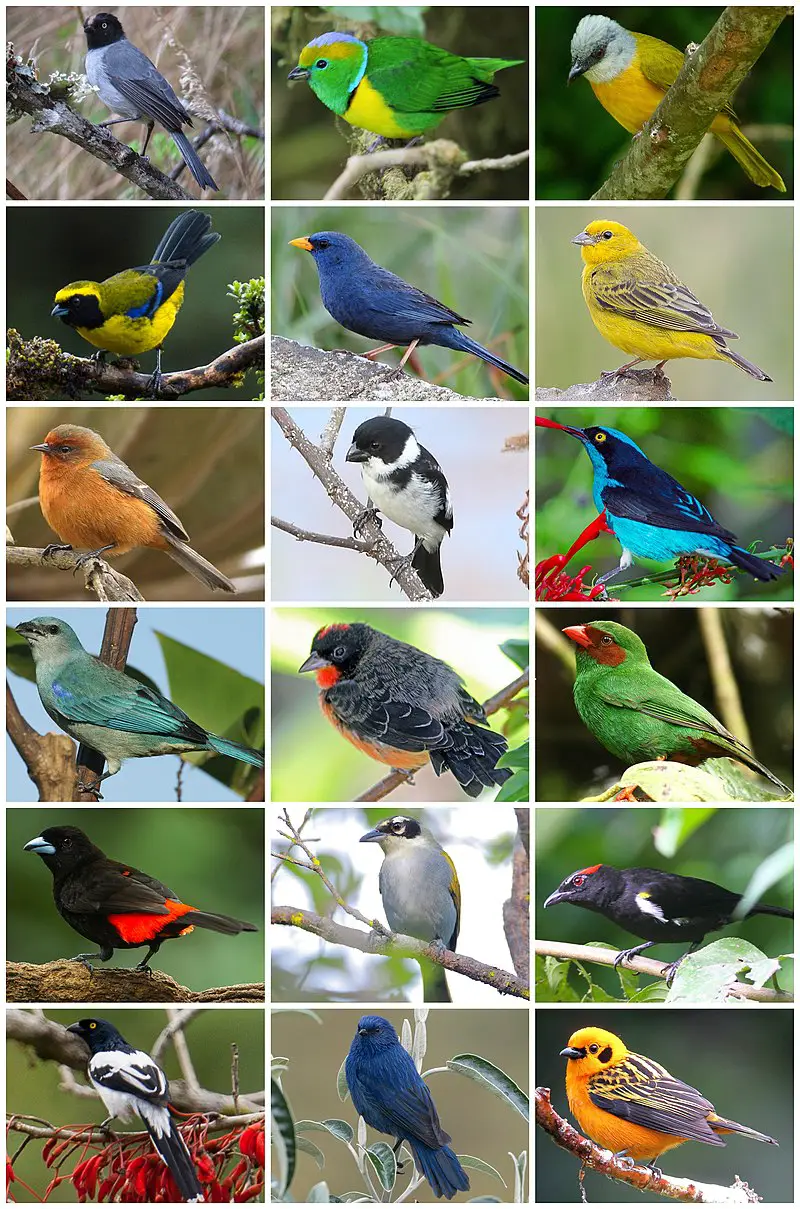
The Tanagers are a beautiful and diverse family of birds native to the Neotropical region. They boast an impressive array of colors, including blues, greens, yellows and reds.
The most common type is the fruit-eating tanager that can be found in tropical forests across Latin America. With nearly 240 species worldwide, they represent almost 4% of all avian species.
These vibrant birds have adapted well to their environment due to their strong bills used for cracking open hard fruits as well as sharp claws for gripping branches while feeding or perching.
As with many other bird families there is natural variation among populations making each one unique in its own way; something that makes them even more special.Scientific classification:
| Kingdom | Animalia |
| Phylum | Chordata |
| Class | Aves |
| Order | Passeriformes |
| Superfamily | Emberizoidea |
| Family | Thraupidae Cabanis, 1847 |
2. Toucans
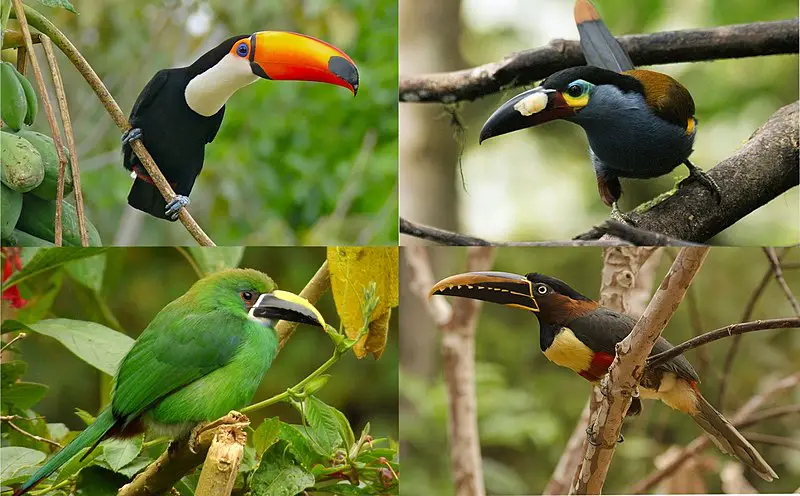
Toucans are members of the Ramphastidae family, which is closely related to American barbets. These birds have brightly-colored feathers and large beaks that come in a variety of colors.
They tend to live high up in trees, where they make their nests with two or four white eggs inside.
Toucans typically feed on fruits and sometimes small insects as well. Some species can even catch larger animals such as reptiles and amphibians for food.
Although toucans like to keep close together when living in groups, during breeding season they become more aggressive towards each other due to competition over resources like nesting sites or food sources.Scientific classification:
| Kingdom | Animalia |
| Phylum | Chordata |
| Class | Aves |
| Order | Piciformes |
| Infraorder | Ramphastides |
| Family | Ramphastidae Vigors, 1825 |
3. Antpitta
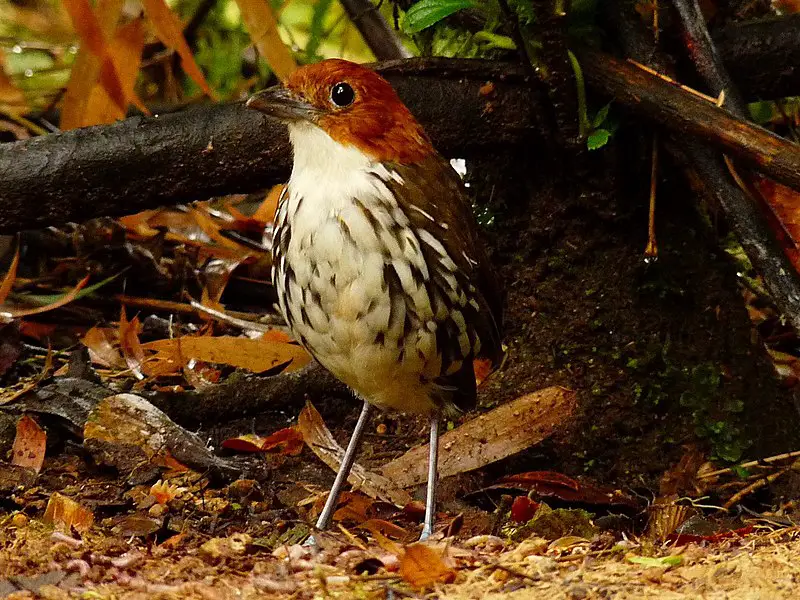
Antpittas are small passerine birds found in Central and South America. They measure 10-20 cm (4-8 inches) in length, making them some of the smallest members of their family Grallariidae.
These birds have a close relationship with both antbirds and gnateaters, which they were formerly placed alongside within the Formicariidae group.
Antpittas typically inhabit subtropical to tropical climates located near streams or other body water sources like rivers, ponds etc., where they forage for food on land but also take occasional dips into nearby bodies of water if needed.
In North America there is one species known as Ochthoeca frontalis which mainly inhabits Mexico’s western mountain ridge regions from Jalisco to Sonora states.Scientific classification:
| Kingdom | Animalia |
| Phylum | Chordata |
| Class | Aves |
| Order | Passeriformes |
| Infraorder | Tyrannides |
| Parvorder | Furnariida |
| Family | Grallariidae P.L. Sclater and Salvin[1], 1873 |
4. Hoatzin
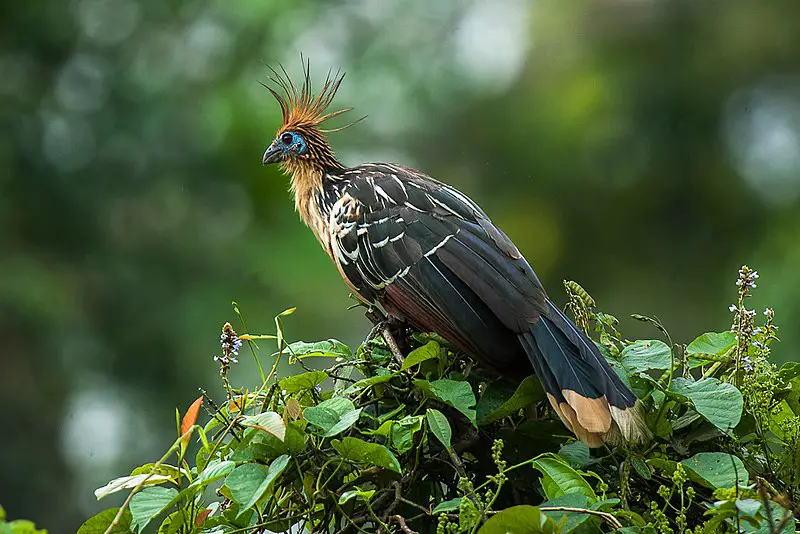
The Hoatzin bird is a tropical species found in the Amazon and Orinoco river basins of South America. It inhabits swamps, riparian forests and mangroves.
This unique bird has chicks that have claws on two of their wing digits which make it the only member in its order – Opisthocomiformes.
Its most distinctive feature is an odour produced from its digestive system which smells like cow manure.
The adults are brownish-grey with blue facial skin, red eyes, pointed crest feathers and black primaries.
They feed mainly on leaves but also eat flowers, fruits or buds when available during different seasons.
They can be heard making loud calls resembling caws at night time as well as repeated whistles throughout the day to keep contact between family members within flocks.Scientific classification:
| Kingdom | Animalia |
| Phylum | Chordata |
| Class | Aves |
| Order | Opisthocomiformes |
| Family | Opisthocomidae |
| Genus | Opisthocomus Illiger, 1811 |
| Species | O. hoazin |
5. Andean Condor
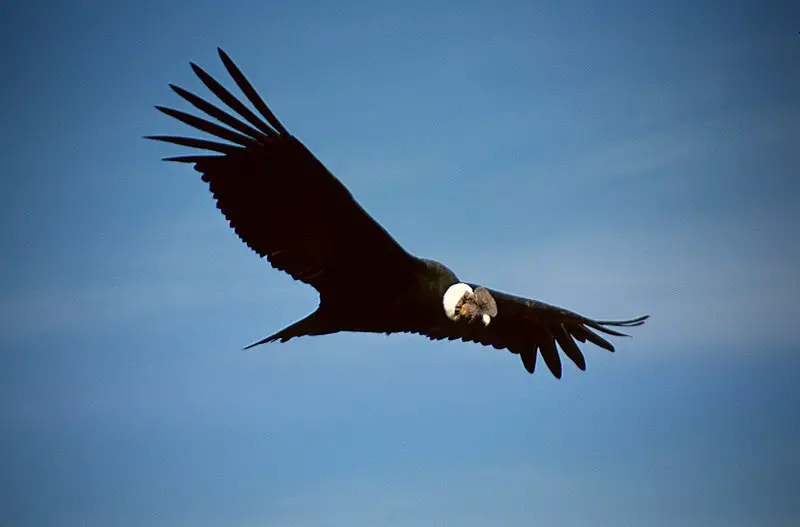
The Andean condor is a giant South American Cathartid vulture and the only member of its genus.
Found in the Andes mountains and along Pacific coasts, it is thought to be the largest flying bird on Earth by weight and wingspan with a maximum wingspan reaching up to 10 feet 10 inches (3.3 m) and weighing 33 lbs (15 kg).
It has mainly black plumage which helps keep it warm at high altitudes, while white patches adorn its head, neck, chest as well as underwing coverts.
Its powerful bill allows it to consume carrion efficiently while also being able to crack bones for nutrition when necessary.
The amazing flight capabilities of this majestic creature allow them soar through air thermals effortlessly; making them an impressive sight against clear blue skies.Scientific classification:
| Kingdom | Animalia |
| Phylum | Chordata |
| Class | Aves |
| Order | Accipitriformes |
| Family | Cathartidae |
| Genus | Vultur Linnaeus, 1758 |
| Species | V. gryphus |
6. Andean Cock-Of-The-Rock
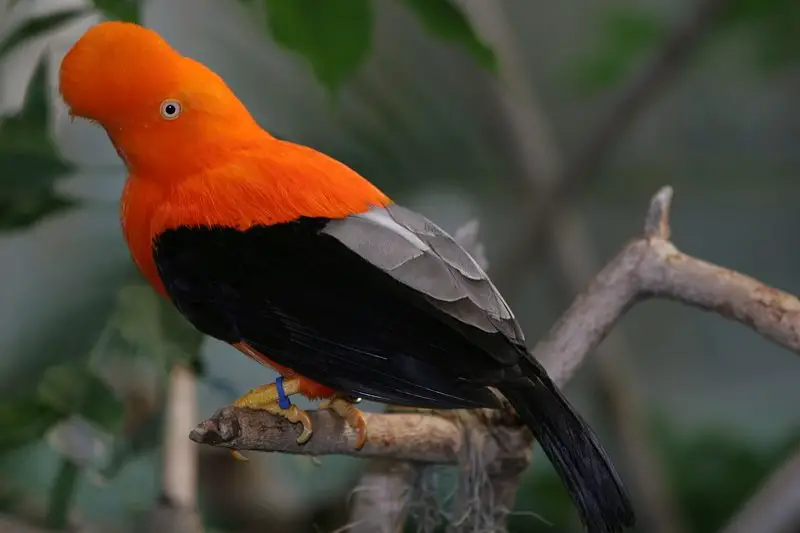
The Andean cock-of-the-rock is a large passerine bird belonging to the Cotinga family. It has four subspecies and can be found in the cloud forests of South America, notably Peru where it has been declared its national bird.
This species exhibits marked sexual dimorphism; males have an impressive orange crest that covers most of their head as well as a bright coral chest patch while females are mainly grey with dark wings and tail feathers.
Both sexes also feature black heads, yellow eyes, long bills and short legs.
Their diet consists mostly of fruits but they have also been known to eat small insects for protein.
They are monogamous birds who mate for life forming strong pair bonds that last several years until one partner dies or moves away from its territory.Scientific classification:
| Kingdom | Animalia |
| Phylum | Chordata |
| Class | Aves |
| Order | Passeriformes |
| Family | Cotingidae |
| Genus | Rupicola |
| Species | R. peruvianus |
7. Blue-Footed Booby
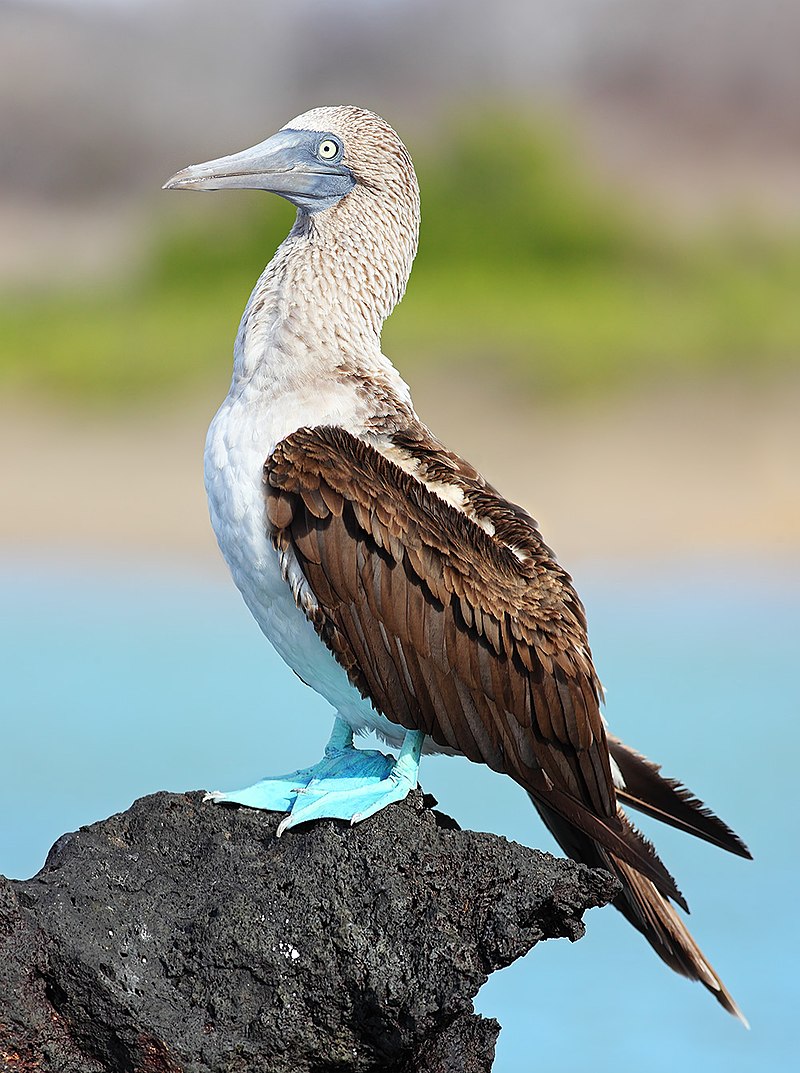
The blue-footed booby is a marine bird that can be found in subtropical and tropical parts of the eastern Pacific Ocean.
It’s one of six species from the same genus, with its unique bright blue feet being a product of their diet as well as an attractive mating ritual for males.
During this ritual, they lift up their feet to show off their brilliant colouring to potential mates.
Boobies are excellent divers, using these skills primarily to hunt fish and squid close by reefs or open ocean waters – plunging into the sea from heights between 10–30 metres.
They also feed on smaller prey such as crustaceans which float near the surface.
Their wingspan averages 1 metre across, making them graceful flyers over large distances both on land and above water surfaces alike.Scientific classification:
| Kingdom | Animalia |
| Phylum | Chordata |
| Class | Aves |
| Order | Suliformes |
| Family | Sulidae |
| Genus | Sula |
| Species | S. nebouxii |
Also Featured In: Birds You’ll Find in the Sea, Birds that Live in the Ocean
8. Black-Tailed Trainbearer
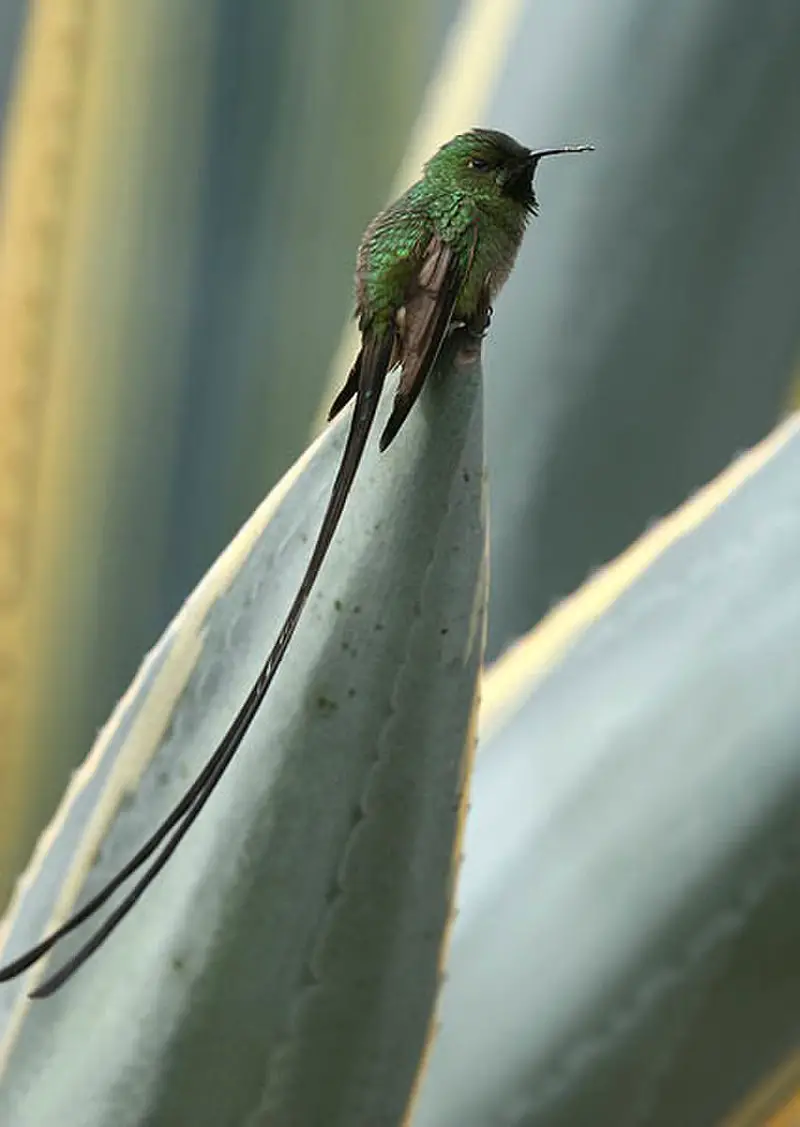
The Black-tailed Trainbearer is a species of hummingbird found in the mountain regions of Colombia, Ecuador and Peru. These birds have an impressive wingspan measuring between 21 and 24 centimeters long including their striking black tail feathers.
They inhabit subtropical or tropical moist montane forests, high altitude shrublands and degraded former forest habitats where they feed on nectar from flowers as well as small insects for protein.
The male has gorgeous blue crowns with black throats while the females are brighter green colouration all over.
Both sexes are quite vocal too with melodic chirruping songs sung throughout the day to mark territory or attract mates during breeding season.Scientific classification:
| Kingdom | Animalia |
| Phylum | Chordata |
| Class | Aves |
| Order | Apodiformes |
| Family | Trochilidae |
| Genus | Lesbia |
| Species | L. victoriae |
9. Waved Albatross
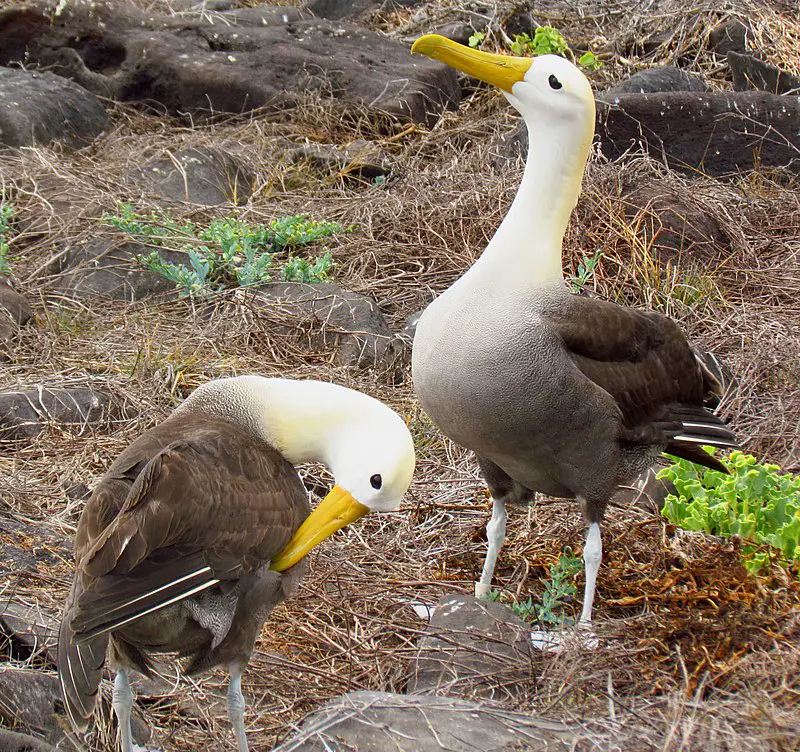
The Waved Albatross is a stunning bird with distinctive black and white plumage. It is the only species of its family Diomedeidae that inhabits in tropical regions.
During breeding season, they can be found mostly near Ecuadorian and Peruvian coasts while during non-breeding season they travel up to 1,000 km east towards Peru’s coastline foraging food.
These birds are graceful gliders soaring through the skies using their long wingspans to navigates winds effortlessly when searching for prey like fish or squid at sea surface.
They also have an impressive courtship ritual involving head nodding which was once thought extinct but thankfully has been sighted again on Galapagos islands recently.Scientific classification:
| Kingdom | Animalia |
| Phylum | Chordata |
| Class | Aves |
| Order | Procellariiformes |
| Family | Diomedeidae |
| Genus | Phoebastria |
| Species | P. irrorata |
10. Flightless Cormorant
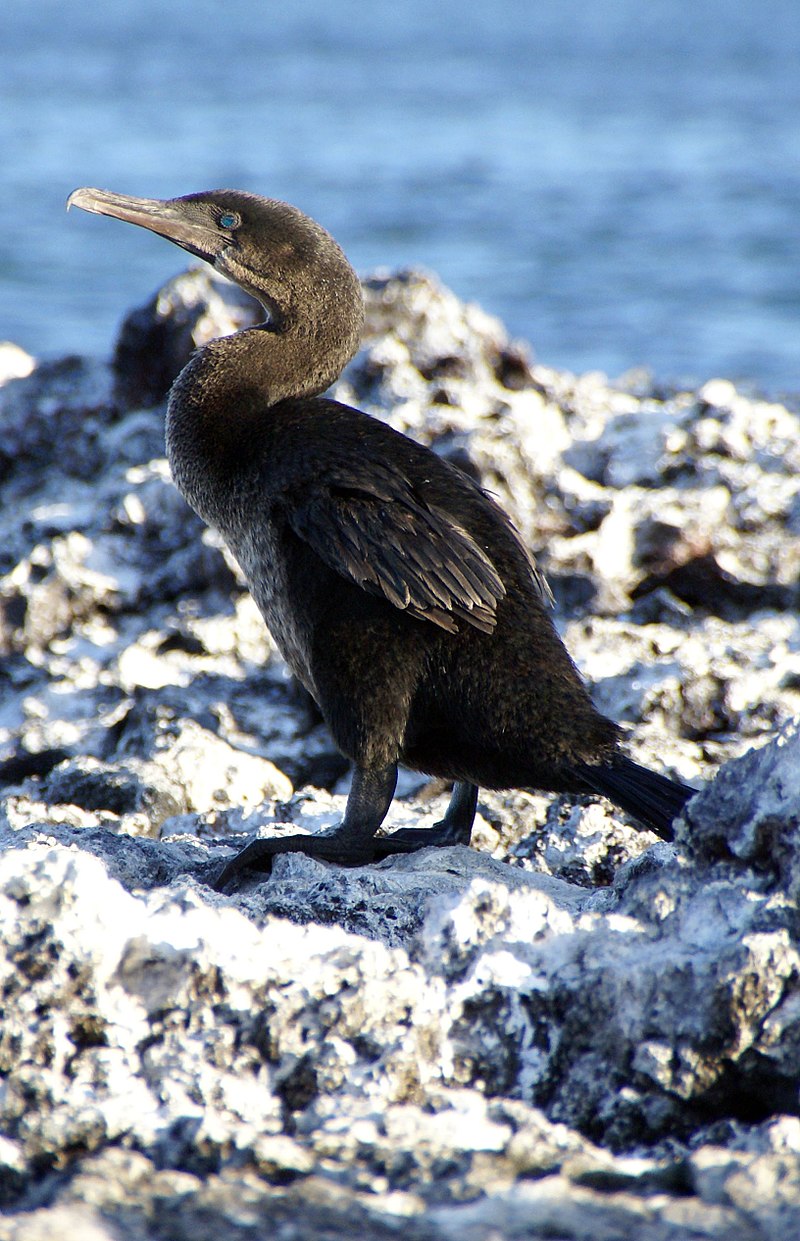
The Flightless Cormorant is a unique species of bird found exclusively on the Galapagos Islands.
It’s one of the most remarkable animals there, as it’s the only known cormorant that has lost its ability to fly due to evolutionary pressures in this isolated environment.
The Flightless Cormorant has an impressive wingspan and strong webbed feet for swimming, but these adaptations are not enough for flight.
Its diet consists mainly of fish caught from coastal waters near its nesting sites, which it dives into with great skill and agility despite being unable to take off from land or water.
This majestic creature stands out among other birds on the islands and can be distinguished by its black feathers, white throat patches, yellow facial skin around their eyes, and bright blue gular pouch under their chin used during courtship displays.Scientific classification:
| Kingdom | Animalia |
| Phylum | Chordata |
| Class | Aves |
| Order | Suliformes |
| Family | Phalacrocoracidae |
| Genus | Nannopterum |
| Species | N. harrisi |
Also Featured In: Galapagos Birds You Should Know, Birds of Galápagos Islands You Need to Know
11. Harpy Eagle
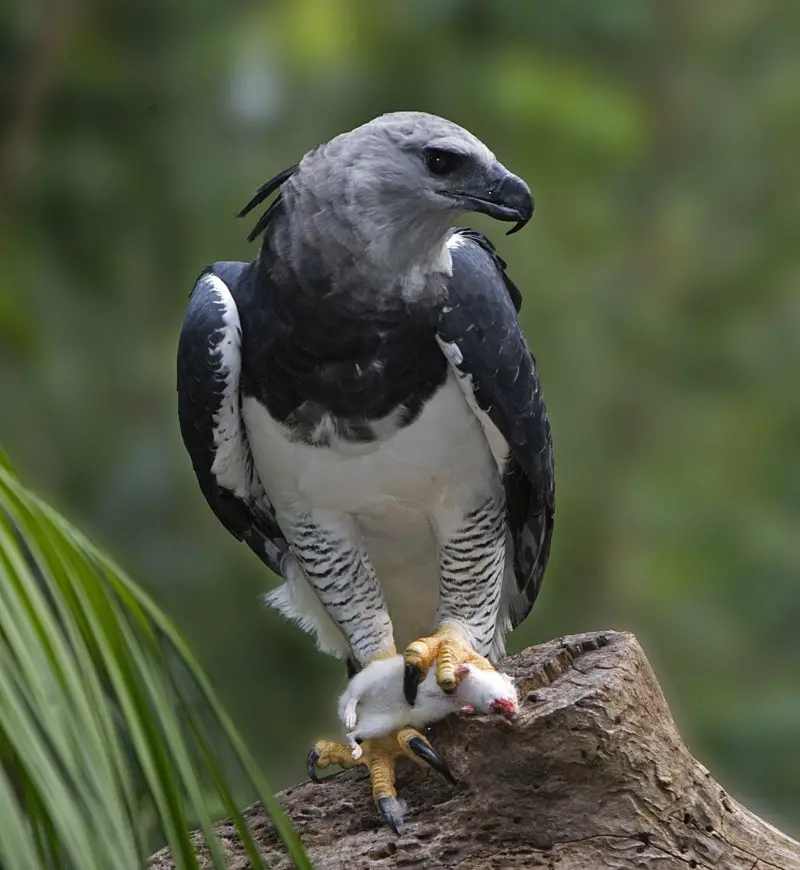
The Harpy Eagle is a magnificent bird of prey found in the tropical forests of Central and South America. It is the largest eagle on Earth, possessing an impressive wingspan that can reach up to 7 feet across.
Its powerful talons are its most distinguishing feature, being able to grasp even large animals such as monkeys or sloths with ease.
The majestic raptor has slate-gray feathers on its back and head which contrast against white undersides and yellow legs.
These birds live alone for much of their life but will come together during breeding season when they construct elaborate nests high off the ground in tall trees.
People have long been fascinated by this species’ impressive size and strength—it truly deserves its nickname as “the lord of skies”.Scientific classification:
| Kingdom | Animalia |
| Phylum | Chordata |
| Class | Aves |
| Order | Accipitriformes |
| Family | Accipitridae |
| Subfamily | Harpiinae |
| Genus | Harpia Vieillot, 1816 |
| Species | H. harpyja |
12. Frigatebird
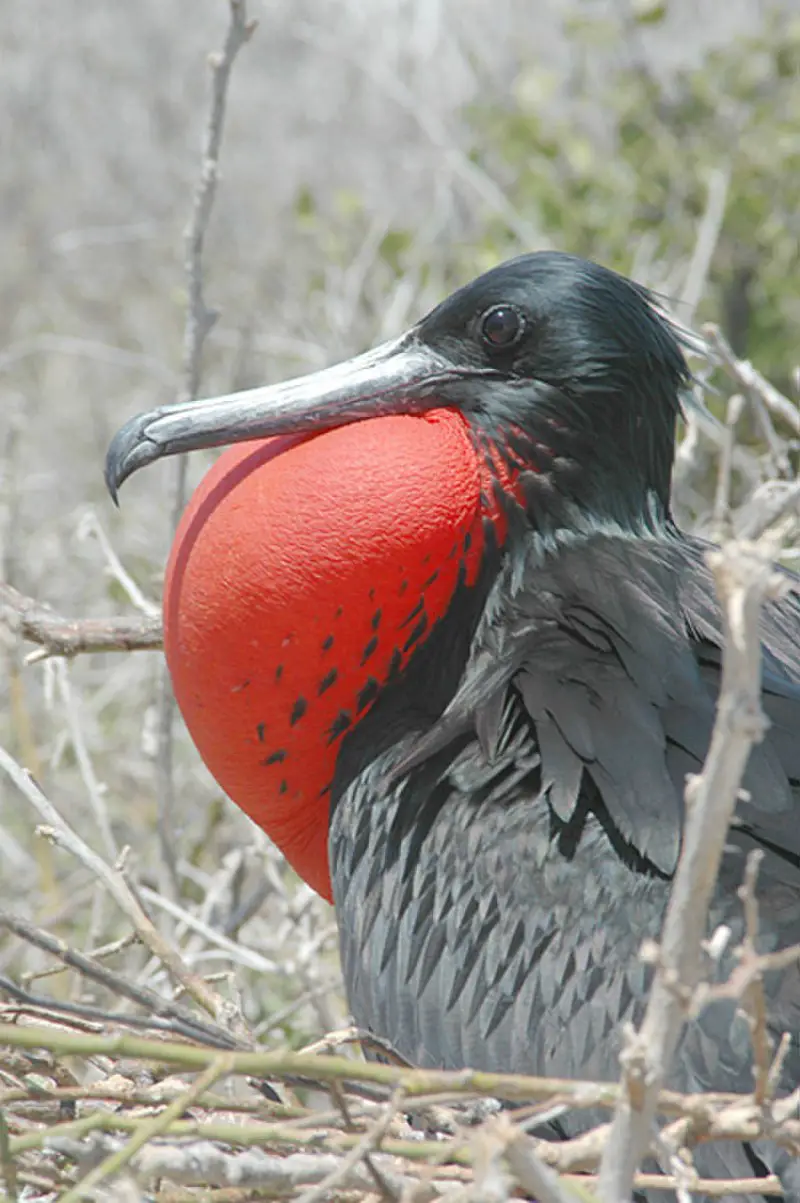
Frigatebirds are a beautiful and mysterious family of seabirds, found in all tropical and subtropical oceans. The five extant species have glossy black plumage, long forked tails, and lengthy hooked bills.
During the breeding season males display a bright red gular pouch which they inflate to attract mates. Females have white underbellies year-round giving them an elegant contrast against their darker feathers.
They spend most of their lives soaring with minimal effort over warm ocean waters seeking food such as fish or squid taken from the surface or plucked out of midair by other birds.
Frigatebirds often nest on isolated islands due to lack of predators yet still manage to travel incredibly large distances between feeding grounds every day making them truly remarkable creatures.Scientific classification:
| Kingdom | Animalia |
| Phylum | Chordata |
| Class | Aves |
| Order | Suliformes |
| Family | Fregatidae Degland & Gerbe, 1867 |
| Genus | Fregata Lacépède, 1799 |
Also Featured In: Flocks Birds around Us, Common Denmark Birds
13. Giant Antpitta
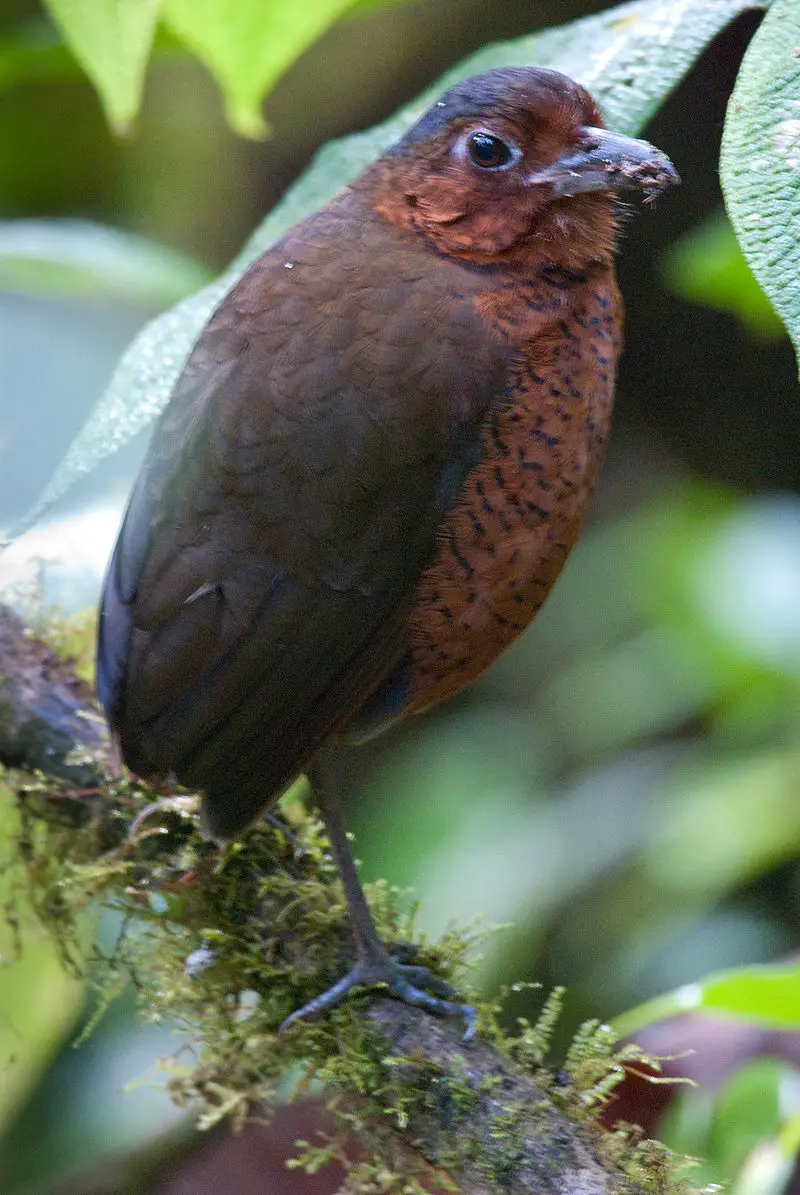
The Giant Antpitta is a rare and mysterious bird species found only in Colombia and Ecuador. It belongs to the antpitta family (Grallariidae) of perching birds.
This majestic creature has three subspecies, one of which might be extinct. Its distinctive features include an olive-brown back with white or yellowish spots on its upper chest and wings, as well as two thick white stripes running down either side of its head from above the eyes to below their ears.
The underside is whitish with dark streaks along the sides near its tail feathers making it easily recognizable from other birds in the region . Despite being rarely seen due to its shy nature, this beautiful giant stands out among South American avifauna for both size and beauty alike.Scientific classification:
| Kingdom | Animalia |
| Phylum | Chordata |
| Class | Aves |
| Order | Passeriformes |
| Family | Grallariidae |
| Genus | Grallaria |
| Species | G. gigantea |
14. Blue-Gray Tanager
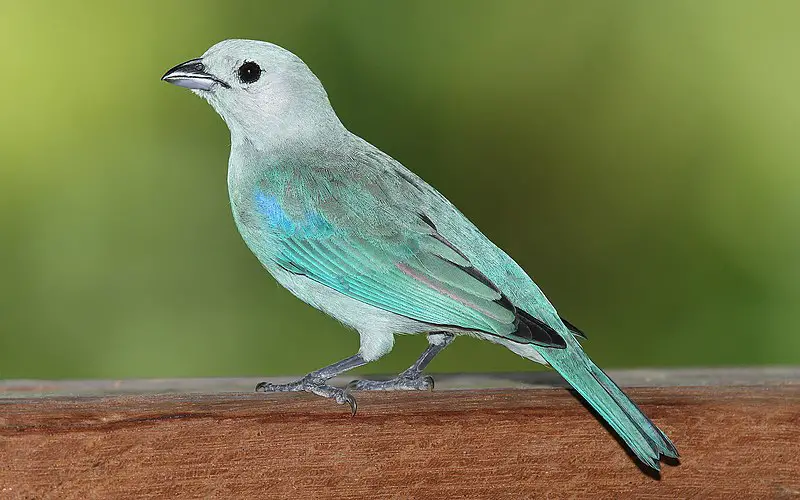
The blue-gray tanager is a medium-sized songbird native to South America, ranging from Mexico all the way down to northern Brazil and Bolivia.
It has been introduced in Lima, Peru as well as Trinidad and Tobago where it is called “blue jean”.
This species was first described by French zoologist Mathurin Jacques Brisson in 1760. The bird’s plumage features hues of gray, blue, yellow and green creating an attractive contrast against its white belly.
Its diet consists mainly of insects like beetles but also fruits such as figs are known to be part of their daily nutrition.
Blue-gray tanagers usually inhabit humid forests near running watercourses making them relatively easy to spot while they search for food on tree branches or foliage cover around streams during the day time.Scientific classification:
| Kingdom | Animalia |
| Phylum | Chordata |
| Class | Aves |
| Order | Passeriformes |
| Family | Thraupidae |
| Genus | Thraupis |
| Species | T. episcopus |
15. Ecuadorian Piculet
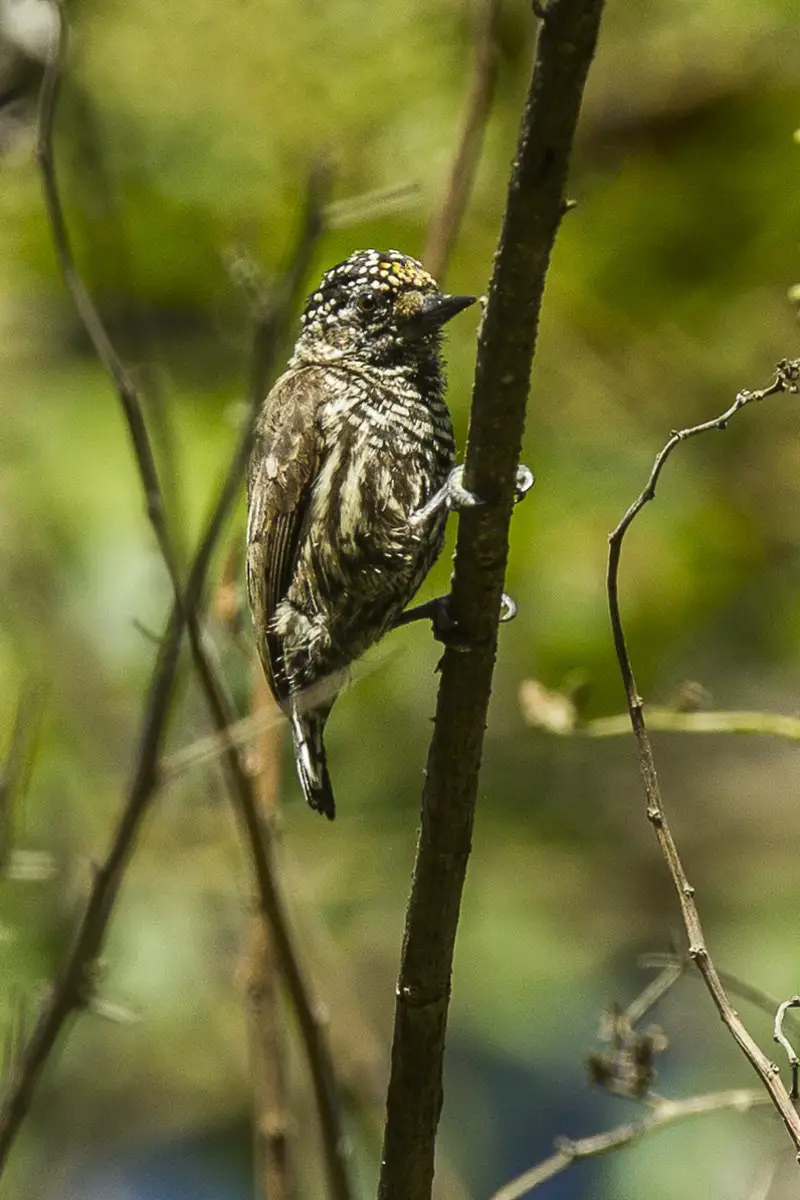
The Ecuadorian piculet is a small bird belonging to the woodpecker family, found in both Ecuador and Peru. It has three distinct subspecies – P. s. sclateri, P.
s. parvistriatus and P. s porcullae- each differing slightly from one another in terms of appearance or size The nominate species (P .s..sclateri) was first described by Taczanowski back in 1877 while its other two variants were discovered much later on Chapman 1921 for Parvistriatus and Bond J 1954 Porcullea respectively.
This beautiful little specimen loves living among dense foliage as well as humid tropical forests where it can feed on insects while also looking out for predators such as cats , hawks etcScientific classification:
| Kingdom | Animalia |
| Phylum | Chordata |
| Class | Aves |
| Order | Piciformes |
| Family | Picidae |
| Genus | Picumnus |
| Species | P. sclateri’ |
16. Galapagos Penguin
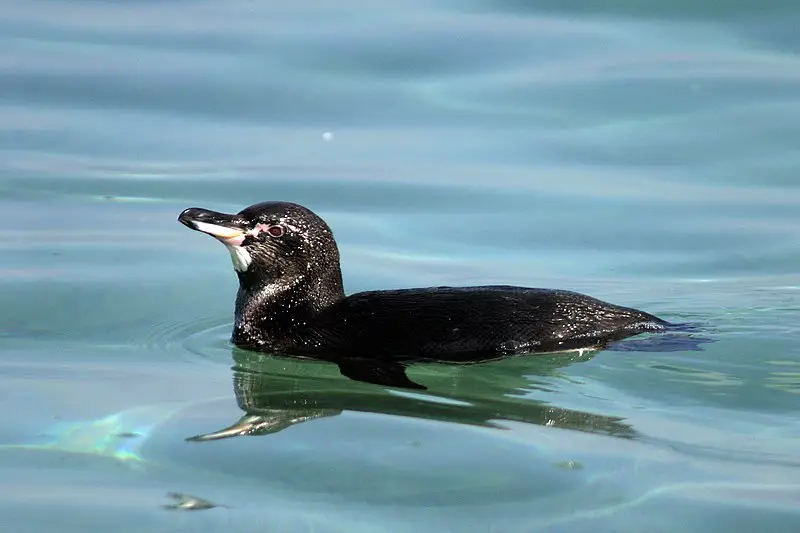
The Galápagos penguin is a unique species of bird found only in the waters around Ecuador’s Galapagos Islands.
It is the northernmost-dwelling penguin, adapted to survive thanks to cool currents from the Humboldt and Cromwell Currents.
This small yet hardy bird has black feathers on its back, with white stripes running down each side of its body and along its face. Its beak is usually yellow or orange and it stands about 27 cm tall when fully grown.
Although they are mostly solitary animals, these penguins form large colonies during breeding season which can number up to 500 individuals at any one time.
The noise of their calls echoes across the islands creating an unforgettable chorus for visitors lucky enough to witness this amazing sight first hand.Scientific classification:
| Kingdom | Animalia |
| Phylum | Chordata |
| Class | Aves |
| Order | Sphenisciformes |
| Family | Spheniscidae |
| Genus | Spheniscus |
| Species | S. mendiculus |
Also Featured In: Most Common Birds in Isabela Island,
17. Violet-Tailed Sylph
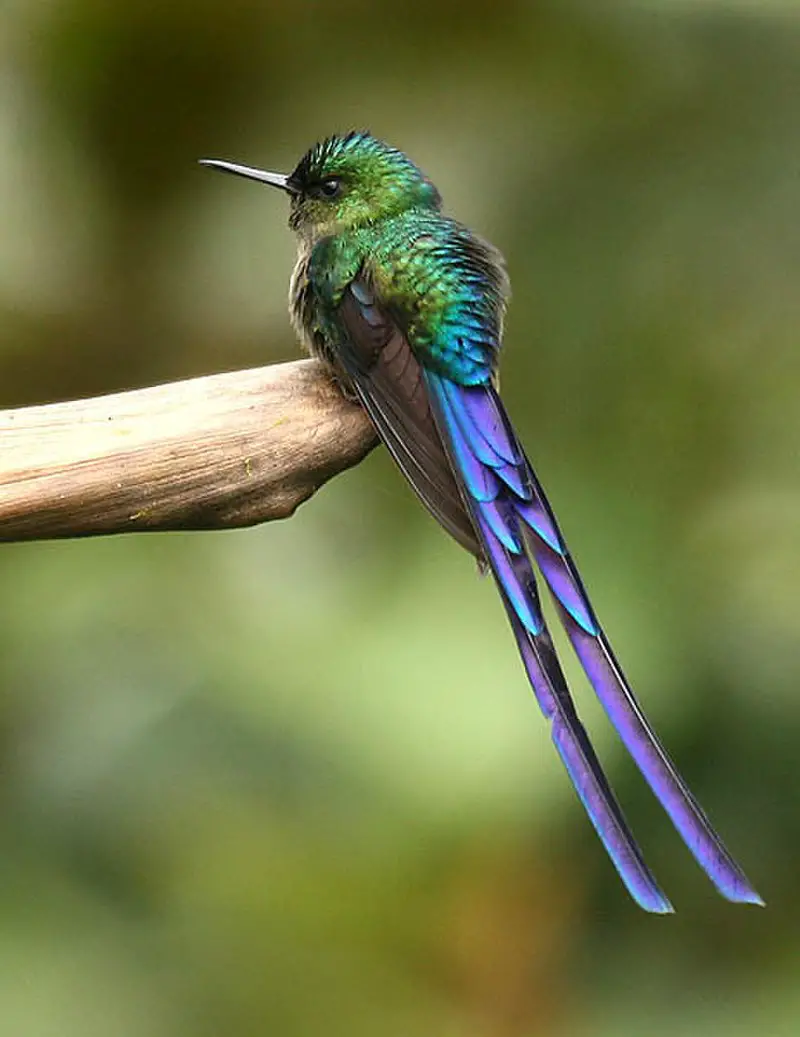
The Violet-tailed Sylph (Aglaiocercus coelestis) is a species of hummingbird which belongs to the “coquettes” tribe, Lesbiini. It can be found in Colombia and Ecuador.
Taxonomically speaking, it is part of a genus that includes two other sylphs: Long-tailed (A. kingii), and Venezuelan (A. berlepschi).
Although these three have similar features such as their tail shape or size; they differ from one another due to variations in range, plumage coloration and vocalizations.
The most distinctive feature about the Violet-Tailed Sylph are its violet feathers on its inner rectrices – hence giving it its name – while otherwise having dark green upperparts with white patches under the wings and spots on chestnut throat sides.
An interesting fact about this bird is that males court females by flying back an forth displaying bright red gorget feathers.Scientific classification:
| Kingdom | Animalia |
| Phylum | Chordata |
| Class | Aves |
| Order | Apodiformes |
| Family | Trochilidae |
| Genus | Aglaiocercus |
| Species | A. coelestis |
18. Boobies
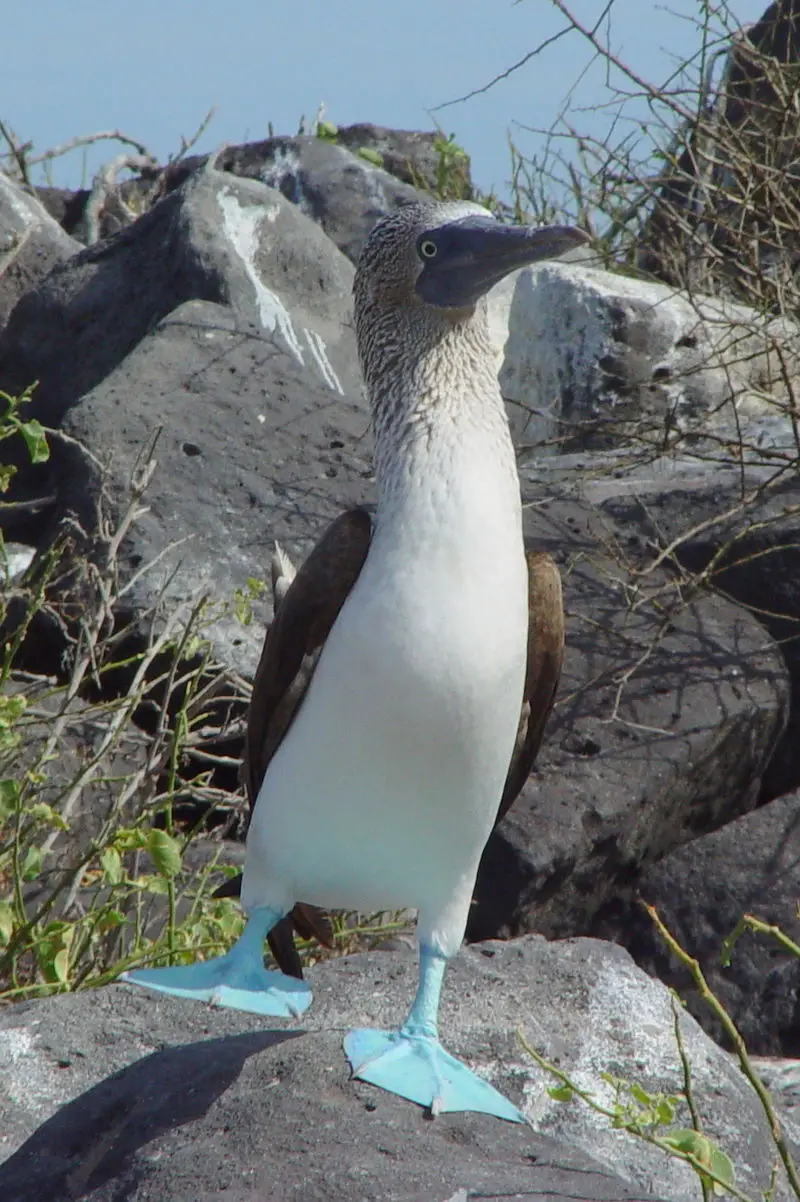
Boobies are seabirds from the family Sulidae. They were originally classified in the genus Sula, and are closely related to gannets (Morus).
Boobies get their name from the Old Norse term “súla,” which was used for another member of their family—the gannet.
These birds can be identified by their brown feathers, long wingspan, webbed feet and sharp bills that they use to catch fish.
Despite being clumsy on land due to their large size and small legs, boobies excel at flying over oceans where they hunt for food with great agility and grace.
Their powerful flaps help them dive quickly underwater as well.Scientific classification:
| Kingdom | Animalia |
| Phylum | Chordata |
| Class | Aves |
| Order | Suliformes |
| Family | Sulidae |
| Genus | Sula Brisson, 1760 |
19. Rufous-Crowned Antpitta
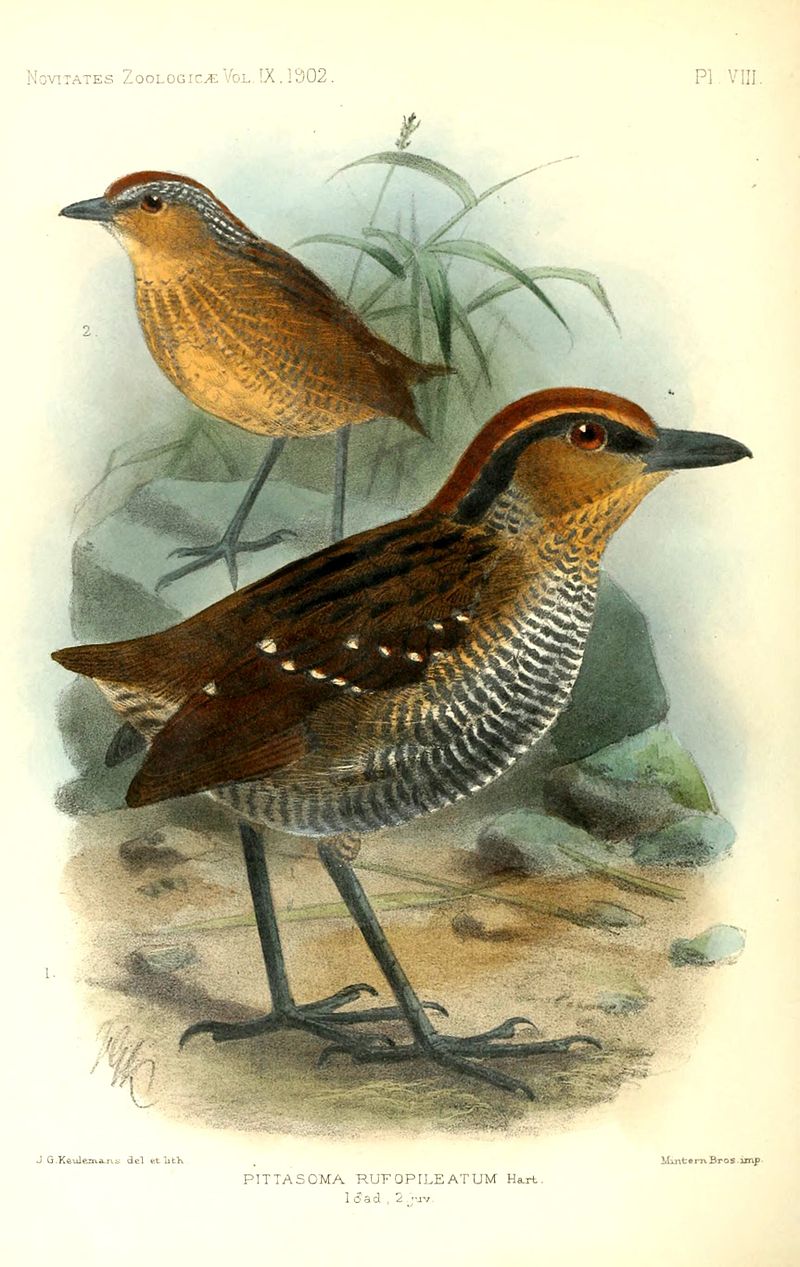
The Rufous-crowned antpitta is a species of bird belonging to the gnateater family, Conopophagidae. It can be found in Colombia and Ecuador and has an unusual position within its genus Pittasoma due to differing taxonomies from the International Ornithological Committee (IOC) and Clements.
This small yet attractive bird features rufous plumage on its head with greyish brown wings, back, breast and tail accompanied by white spots or streaks along its flanks. Its bill is short but stout while it also possesses long legs for easy travel through dense vegetation where they are most commonly sighted.
They feed mostly on insects such as ants which are caught using their strong bills.Scientific classification:
| Kingdom | Animalia |
| Phylum | Chordata |
| Class | Aves |
| Order | Passeriformes |
| Family | Conopophagidae |
| Genus | Pittasoma |
| Species | P. rufopileatum |
20. Black-Breasted Puffleg
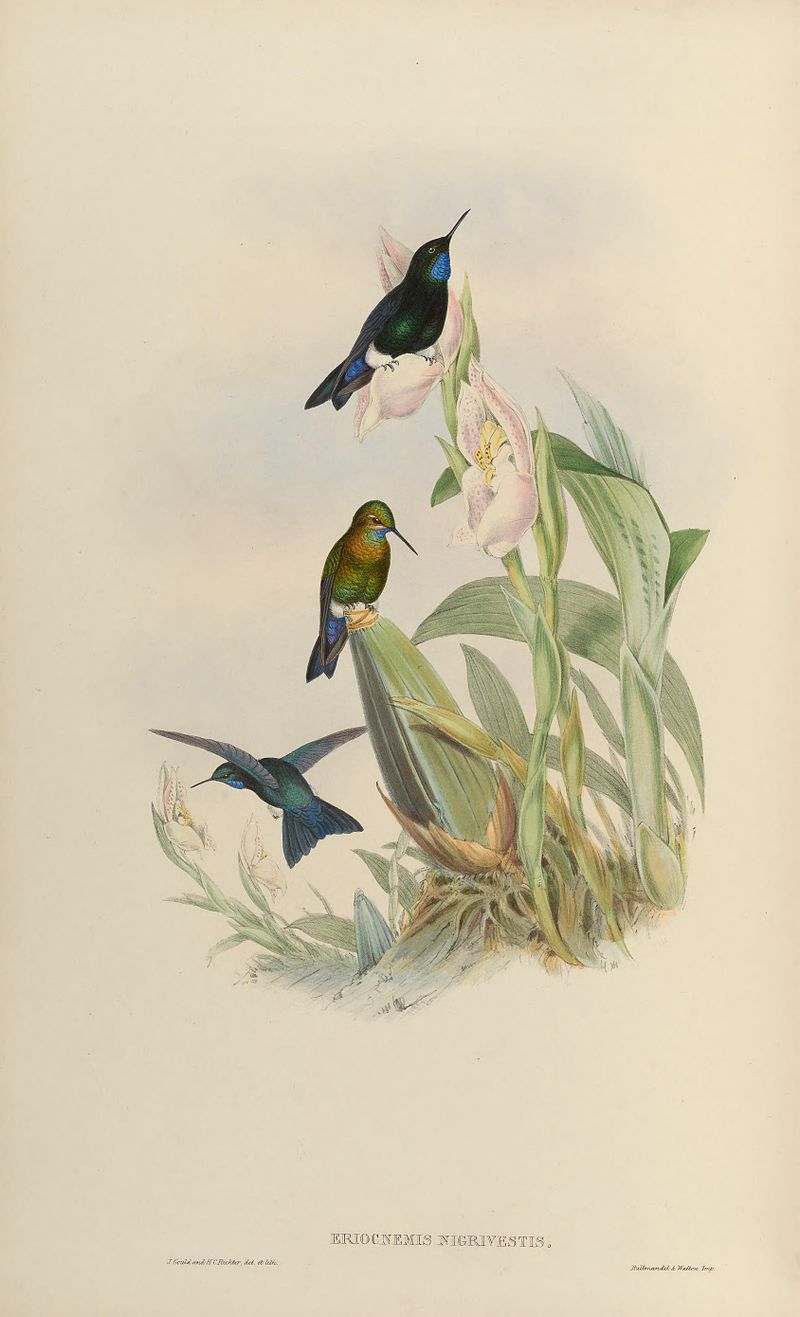
The Black-breasted Puffleg is a beautiful hummingbird species native to Ecuador. It measures 8–9 cm in length and has striking plumage, with the male having black upper- and underparts, dark blue tail coverts, and a violet-blue throat and undertail coverts.
The female of this species displays bronze green above with bluish grey on its breast sides.
Unfortunately it is endangered due to extensive habitat loss across its range; there are estimated only 300 individuals left in the wild today.
Conservation efforts have been put towards protecting their small range size as well as restoring degraded habitats that these birds rely upon for food sources such as nectar from flowers or insects found within areas impacted by deforestation activities.Scientific classification:
| Kingdom | Animalia |
| Phylum | Chordata |
| Class | Aves |
| Order | Apodiformes |
| Family | Trochilidae |
| Genus | Eriocnemis |
| Species | E. nigrivestis |
21. Ecuadorian Thrush
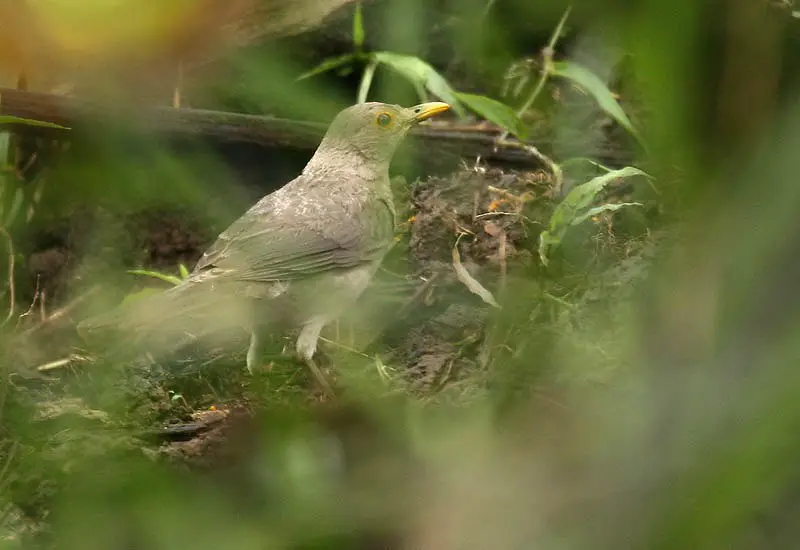
The Ecuadorian thrush is a small bird found in western South America, primarily in western Ecuador and far northwestern Peru.
It has an incredibly unique appearance; its most distinguishing feature being the narrow eyering which sets it apart from other species of thrush.
The habitat of this beautiful creature consists mostly of woodland areas as well as forest edges and clearings up to 2000 metres above sea level.
This shy but stunning little bird can be identified by its brown plumage covered with white spots, blue-grey wings, yellow eye ring and bright red bill.
Its diet mainly comprises insects and berries found on trees or shrubs within their range – making them important pollinators for local plants.Scientific classification:
| Kingdom | Animalia |
| Phylum | Chordata |
| Class | Aves |
| Order | Passeriformes |
| Family | Turdidae |
| Genus | Turdus |
| Species | T. maculirostris |
22. Ecuadorian Hillstar
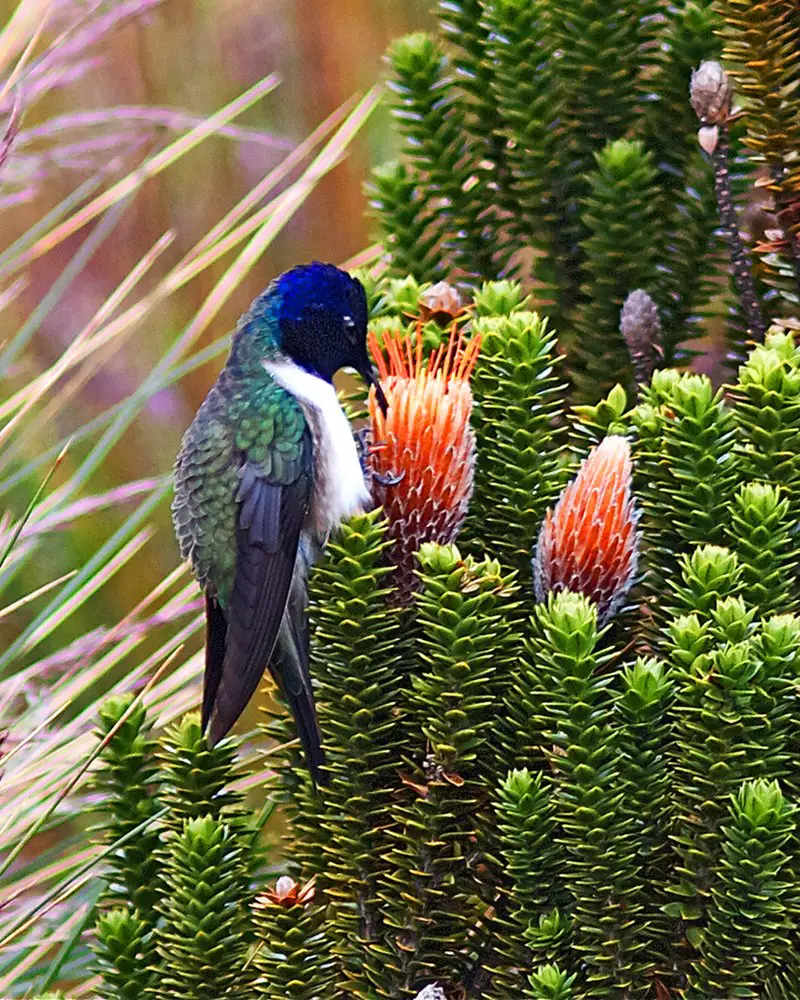
The Ecuadorian hillstar is a species of hummingbird found in the Andes Mountains of Ecuador and Colombia. It stands at 12cm tall, with its black bill slightly curved downwards.
The bird mainly lives in high-altitude mountain grasslands between 3,500 and 5,200 meters above sea level. Its feathers are usually brown or grey on top while being buffy white underneath; males tend to have more vibrant colors than females.
These birds feed on nectar from flowers as well as insects like flies and moths which they catch mid-air during their flight. They often build nests close together for protection against predators such as cats or hawks that may attack them out of hunting season when food sources are scarce elsewhere.Scientific classification:
| Kingdom | Animalia |
| Phylum | Chordata |
| Class | Aves |
| Order | Apodiformes |
| Family | Trochilidae |
| Genus | Oreotrochilus |
| Species | O. chimborazo |
23. Crimson-Mantled Woodpecker
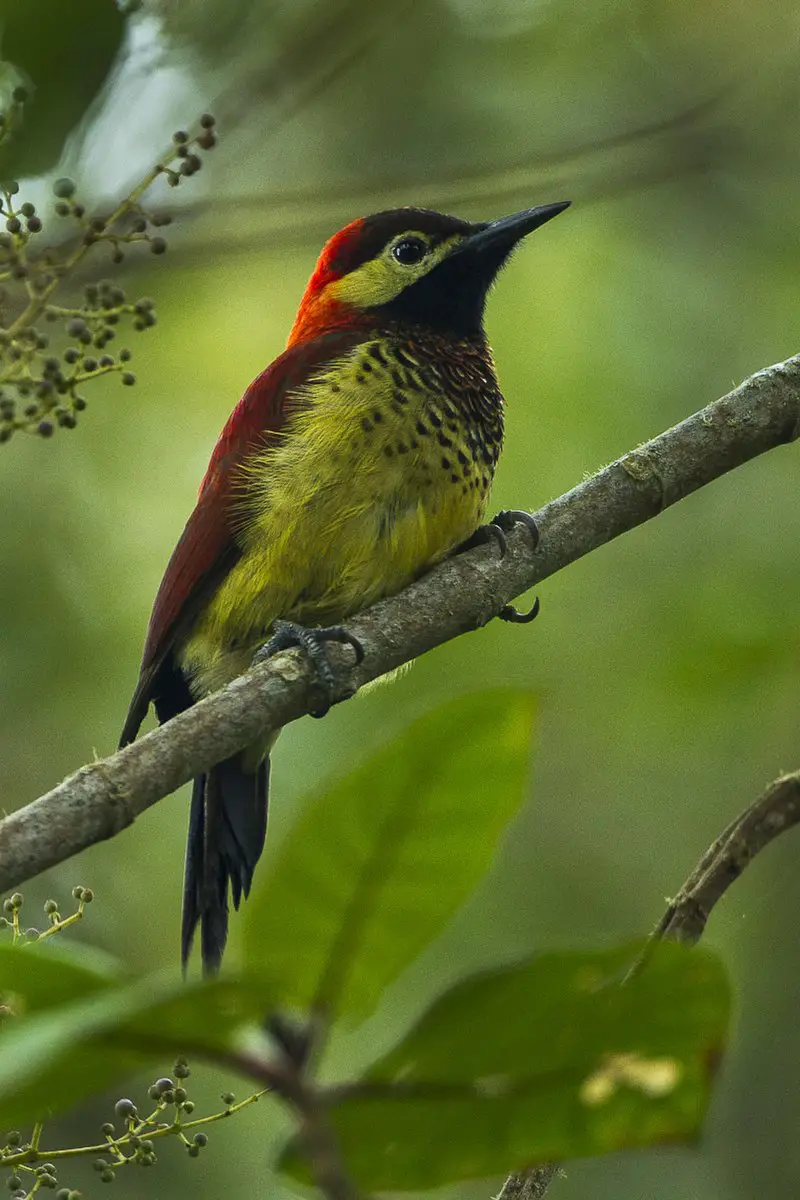
The Crimson-mantled Woodpecker is a beautiful and unique bird found in Central America, particularly Mexico. It has predominantly red plumage on its back with some black markings along the wings and head which makes it easily identifiable.
Its scientific name, rivolii honours French ornithologist François Victor Masséna who was third Duke of Rivoli and third Prince of Essling.
The species belongs to the woodpecker family (Picidae) but were formerly placed under genus Piculus before mitochondrial DNA sequencing moved them into Colaptes genus instead.
Interestingly enough, sex determination of this species can be determined by their plumage coloration; males have brighter crimson mantles than females do. All in all, this gorgeous bird is an incredible sight to behold for any birder or nature lover alike.Scientific classification:
| Kingdom | Animalia |
| Phylum | Chordata |
| Class | Aves |
| Order | Piciformes |
| Family | Picidae |
| Genus | Colaptes |
| Species | C. rivolii |
24. Carunculated Caracara
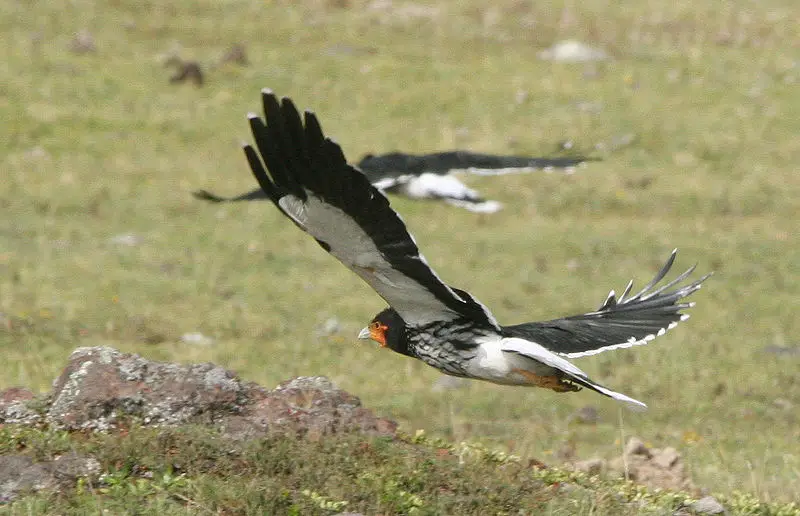
The carunculated caracara is a bird of prey belonging to the family Falconidae. It is found in páramo, high-altitude areas of Ecuador and Colombia, where it can be from uncommon to fairly common.
This opportunistic species tends to forage on the ground and will feed on anything ranging from small animals to even dead carcasses (carion). It has similar features as its close relative – mountain Caraca; however they both differ in some ways too.
The Carunculated caracara’s plumage includes black wings with white patches at their tips, chestnut red breast feathers, yellow bill and legs along with a distinctive facial feature – fleshy wattle which hangs below each eye giving rise to its name i.e “Carunculatus”.Scientific classification:
| Kingdom | Animalia |
| Phylum | Chordata |
| Class | Aves |
| Order | Falconiformes |
| Family | Falconidae |
| Genus | Phalcoboenus |
| Species | P. carunculatus |
25. Trogon
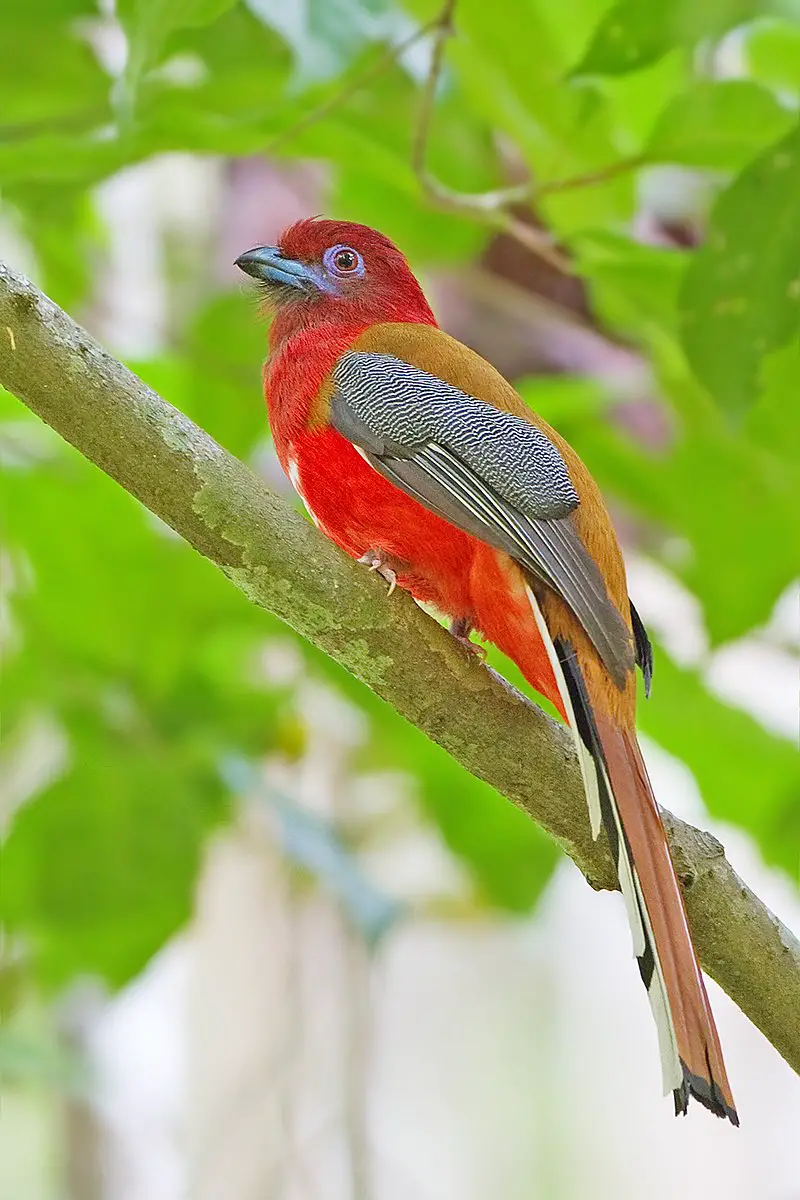
Trogons are a unique bird species that can be found all over the world. They belong to the order Trogoniformes and have only one family, called Trogonidae, which consists of 46 species in seven genera.
Fossil records show that trogons existed 49 million years ago during the Early Eocene period. It is believed they may be closely related or form part of two other orders: Coraciiformes and Passerines.
These birds typically have brightly colored feathers with some having iridescent colors on their wings and tails as well as red bellies and breasts.
Their diet mainly consists of fruit, insects, lizards and frogs but larger ones will also feed on small mammals such as mice or bats.
The most famous member from this group is Quetzalcoatlus – an extinct giant pterosaur which lived approximately 70-65 million years agoScientific classification:
| Kingdom | Animalia |
| Phylum | Chordata |
| Class | Aves |
| Clade | Cavitaves |
| Clade | Eucavitaves |
| Order | Trogoniformes AOU, 1886 |
| Family | Trogonidae Lesson, 1828 |
26. Banded Ground Cuckoo
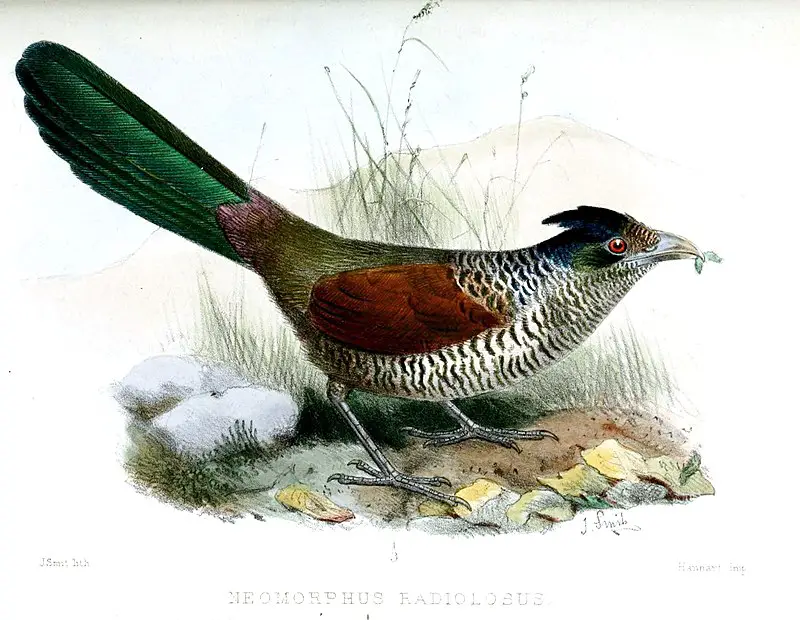
The Banded Ground Cuckoo is an endangered species of cuckoo found in Colombia and Ecuador.
Measuring about 46 cm long, it has a distinctive colour pattern consisting of reddish-brown bands on its wings and tail feathers as well as bold white barring across the chest and belly.
Its habitat consists mostly of lowland tropical rainforest where it feeds mainly on lizards, frogs, snakes, insects and small mammals that can be foraged from the ground or taken mid-flight.
The birds are typically solitary but occasionally form pairs during breeding season which normally takes place between May to August each year with clutches ranging from one to four eggs being laid at once.
Conservation efforts have been put in place by both governments who work together to monitor populations while also protecting their habitats against deforestation caused by human activities such as logging or farming practices.Scientific classification:
| Kingdom | Animalia |
| Phylum | Chordata |
| Class | Aves |
| Order | Cuculiformes |
| Family | Cuculidae |
| Genus | Neomorphus |
| Species | N. radiolosus |
27. Tropical Mockingbird
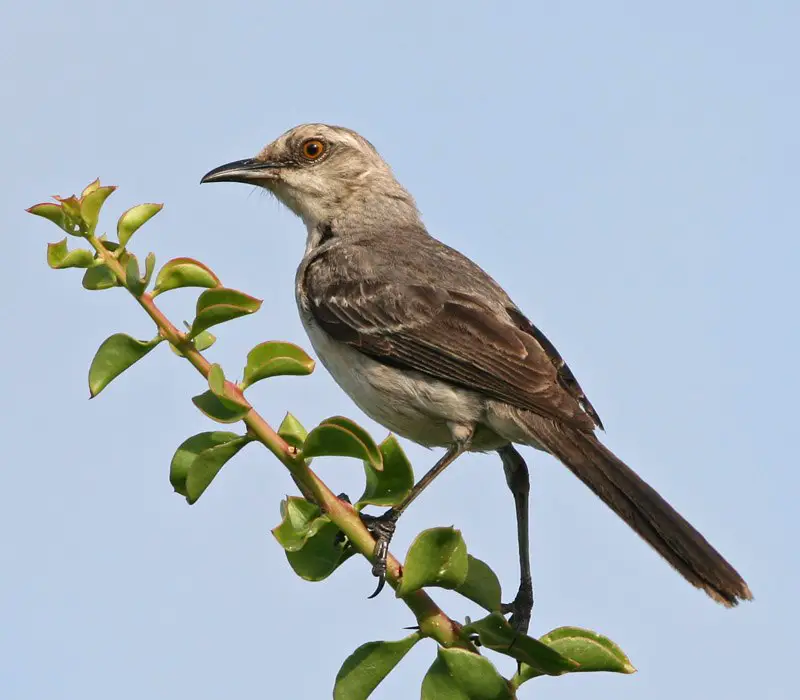
The Tropical mockingbird is a species of bird found throughout Central America and the Caribbean. It has been classified as a resident breeding bird, with its range stretching from southern Mexico to northern and eastern South America.
This species is closely related to the Northern Mockingbird, forming what is known as a superspecies between them both.
The Tropical mockingbird can be recognized by its grey-brown coloration on top, blending into white underparts which are highlighted by black spots along their throat and wings.
They have long legs for perching in trees or shrubs while searching for prey such as insects before singing out melodic songs during territorial disputes with other birds in the area.
Sadly, one subspecies -the San Cristobal Mockingbird – has been listed as critically endangered due to habitat destruction caused by human activities including logging within their natural environment.Scientific classification:
| Kingdom | Animalia |
| Phylum | Chordata |
| Class | Aves |
| Order | Passeriformes |
| Family | Mimidae |
| Genus | Mimus |
| Species | M. gilvus |
28. Violet-Throated Metaltail
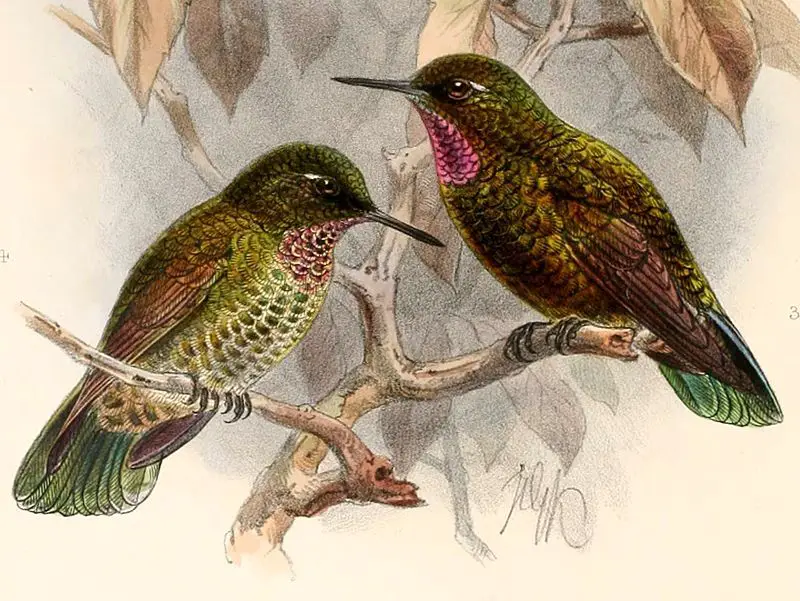
The Violet-throated Metaltail is an endangered species of hummingbird from the coquettes tribe, which are subfamily Lesbiinae.
It’s endemic to Ecuador and is considered monotypic; though at one point it was thought to be a subspecies of what we now know as the Fiery-throated Metaltail.
The bird has a grayish head with violet throat patch that distinguishes its name and white belly feathers.
Its wings are dark blue on top while underneath they have large black streaks along with small red patches near their shoulder area.
These birds live in temperate rainforests where they feed on nectar from flowers, insects, spiders and tree sap for energy throughout their day.Scientific classification:
| Kingdom | Animalia |
| Phylum | Chordata |
| Class | Aves |
| Order | Apodiformes |
| Family | Trochilidae |
| Genus | Metallura |
| Species | M. baroni |
29. New World Vultures
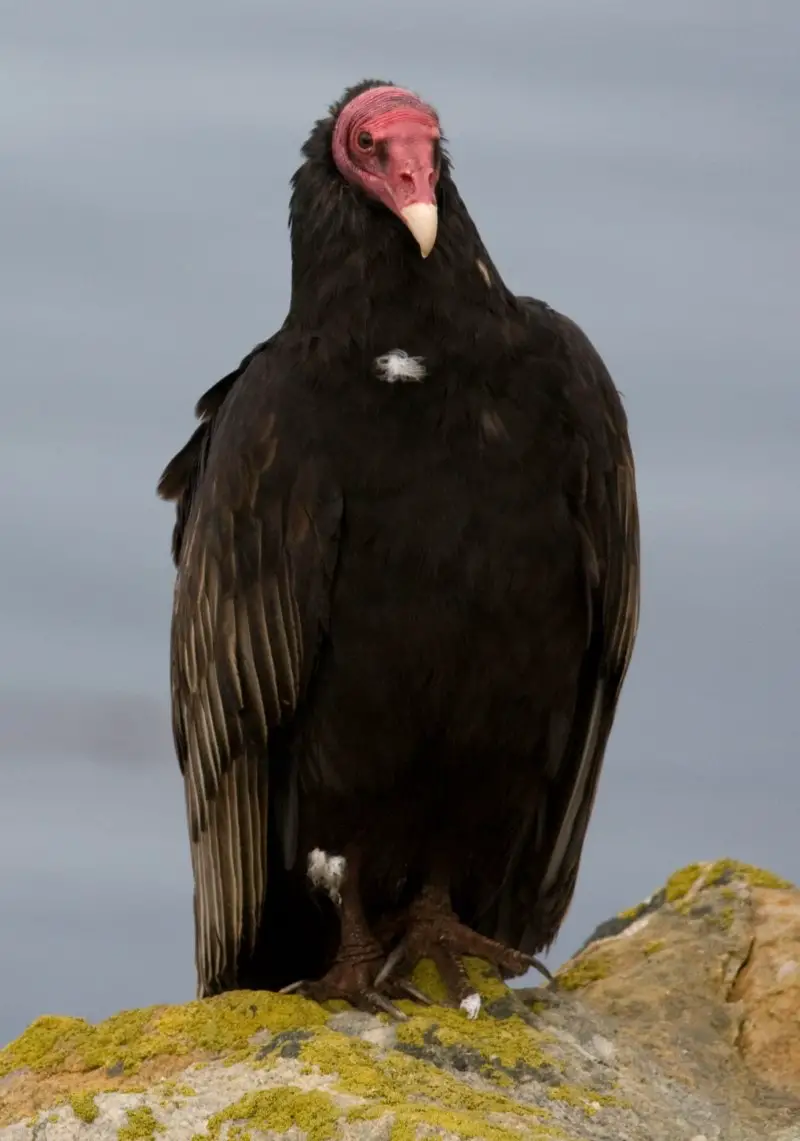
New World vultures are a large group of birds found in the Americas. They belong to the family Cathartidae and consist of seven species across five genera.
These include five vulture species, such as the Black Vulture, Turkey Vulture, King Vulture and more; as well as two condor species which live in warmer climates.
During Neogene times these “New World” vultures were widespread both in North America and Old World regions alike.
While they do not form one single clade with their counterparts from other parts of the world, they differ genetically but still share similar characteristics including bald heads without feathers or beaks used for scavenging carrion off carcasses on land or water surfaces.Scientific classification:
| Kingdom | Animalia |
| Phylum | Chordata |
| Class | Aves |
| Order | Accipitriformes |
| Family | Cathartidae Lafresnaye, 1839 |
Also Featured In: Birds that Live in Newfoundland and Labrador, Scavengers Birds You Should Know
30. Motmot
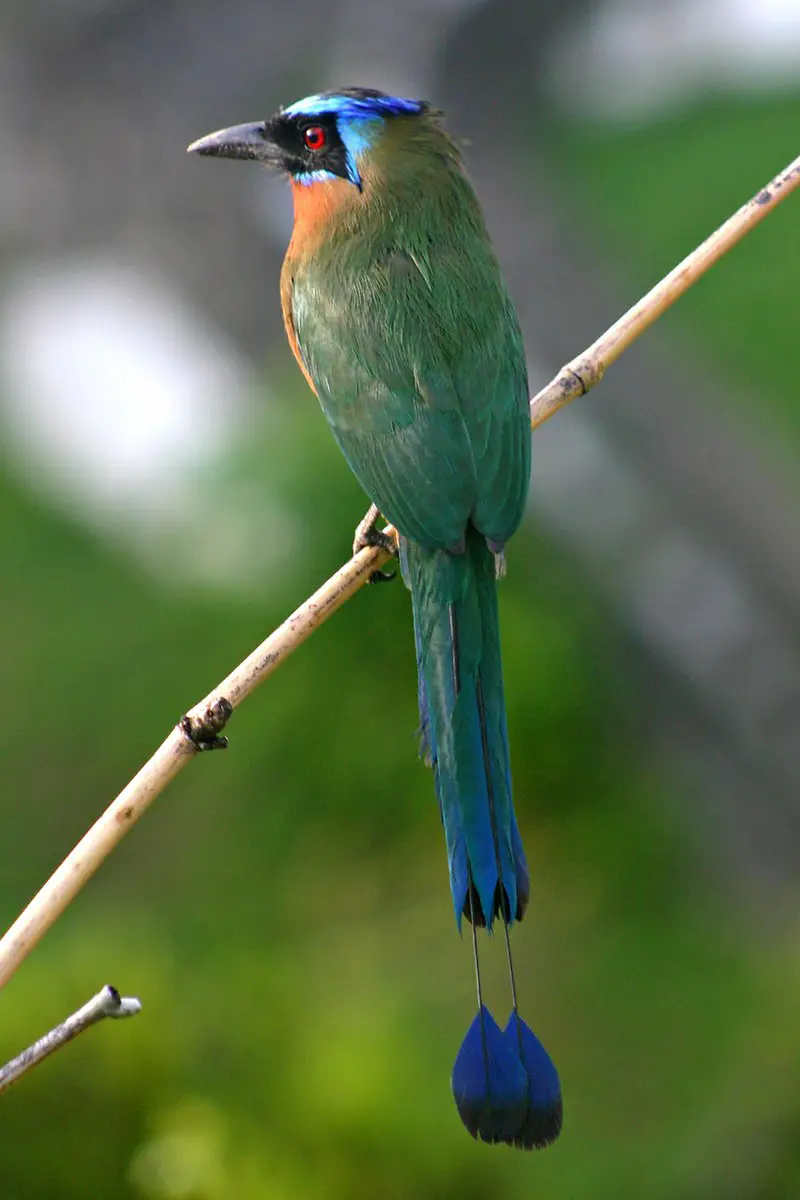
Motmots are a family of birds in the order Coraciiformes, known for their vibrant plumage and relatively heavy bills. They inhabit woodlands or forests across the Neotropics and can range in size from small to large.
The most distinctive feature of motmot species is their long tail feathers that some have adorned with unique patterns like eyespots.
Their diet consists mainly of insects but they will also eat smaller vertebrates such as lizards, frogs and fish.
Motmots are active during daylight hours where they can be seen perching on branches along forest edges or flitting through trees hunting prey.
These beautiful creatures have become an important part of many peoples’ lives throughout Latin America due to them being considered symbols of good luck by local cultures.Scientific classification:
| Kingdom | Animalia |
| Phylum | Chordata |
| Class | Aves |
| Order | Coraciiformes |
| Family | Momotidae GR Gray, 1840 |
31. Puffbird
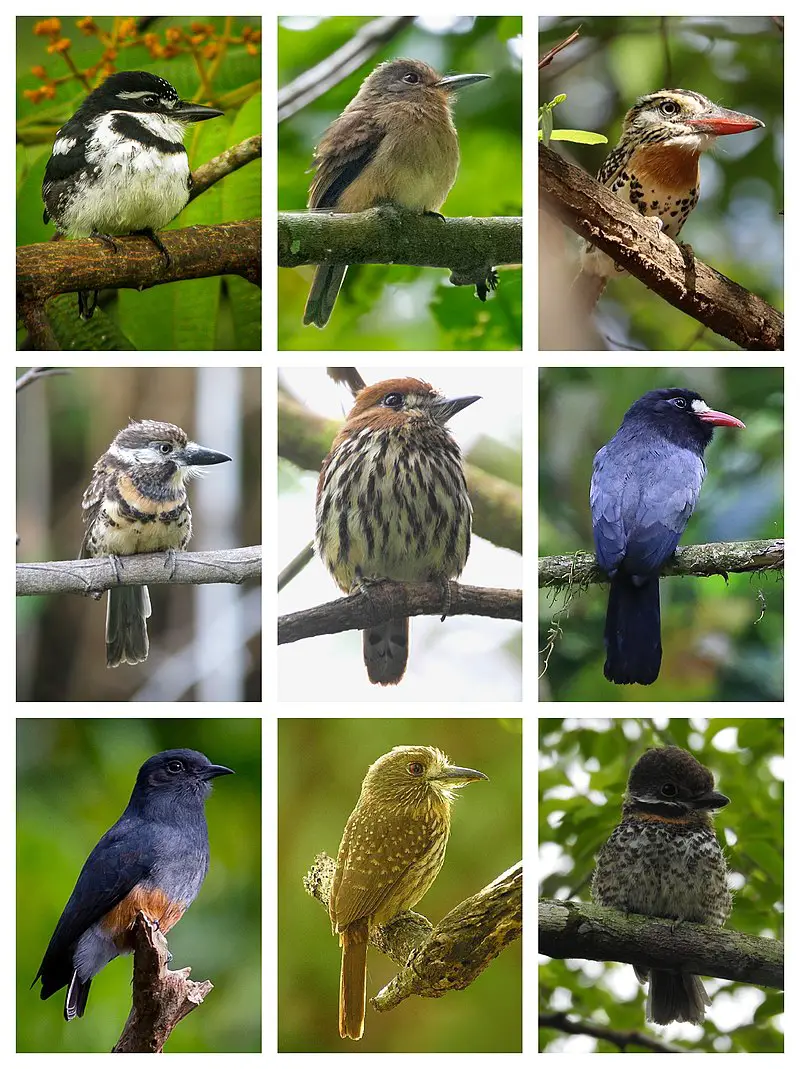
The Puffbird is a tropical tree-dwelling bird found in South America, Mexico and Central America.
It belongs to the near passerine family Bucconidae, which also includes jacamars – its closest relatives.
The order Piciformes unites these two families although some consider them separate under Galbuliformes.
Unlike other birds of the same group that have dazzling iridescent feathers, puffbirds are more modestly coloured with their greyish brown plumage blending into their environment for camouflage purposes when perched on trees or shrubs searching for insects as food sources using their long pointed bill.
They can be quite difficult to spot due to being small and well camouflaged but they may give away their presence by calling out loudly with an unmistakable whistling soundScientific classification:
| Kingdom | Animalia |
| Phylum | Chordata |
| Class | Aves |
| Order | Piciformes |
| Suborder | Galbuli |
| Family | Bucconidae Horsfield, 1821 |
32. Jacamars
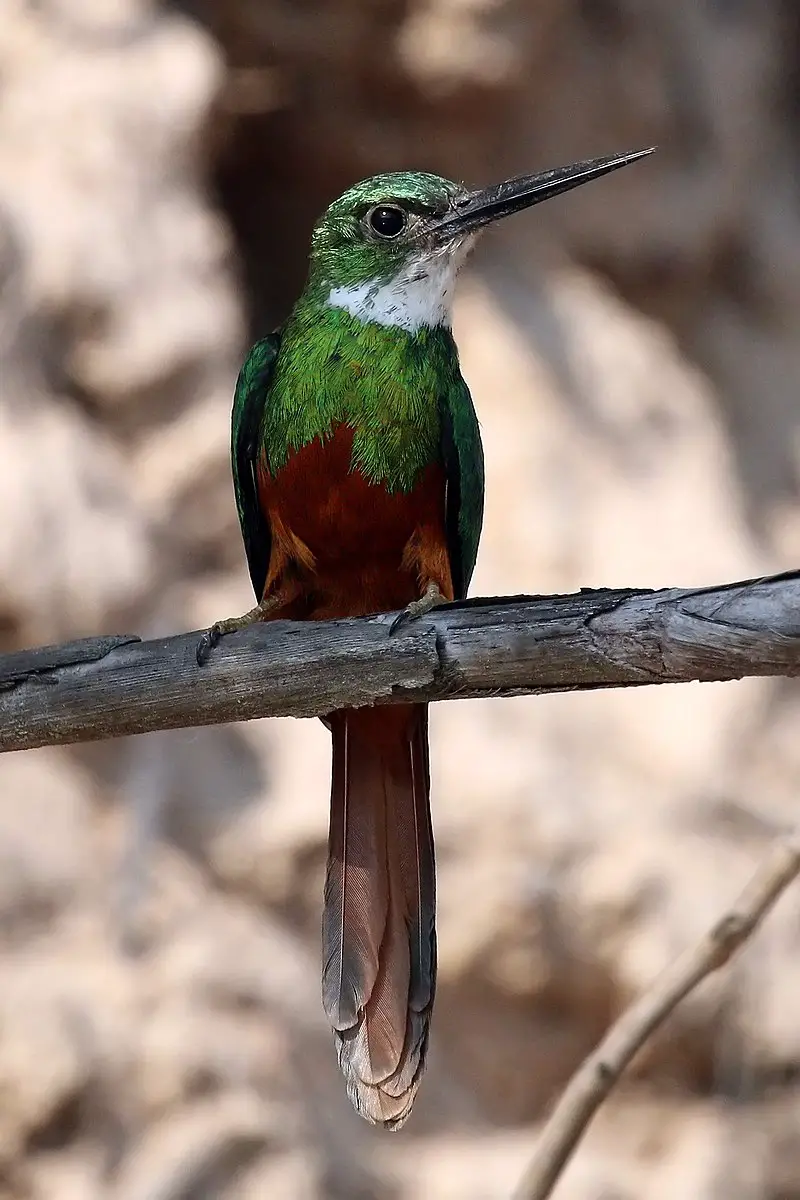
Jacamars are tropical birds native to South and Central America, extending as far north as Mexico. They belong to the Galbulidae family which consists of five genera and eighteen species in total.
These captivating birds can be easily distinguished by their unique appearance; they have long sharp bills with bright vivid plumage ranging from blues, greens and yellows that create a beautiful contrast against the lush vegetation of their natural habitat.
Jacamars prefer to inhabit dense forested areas near rivers or streams where they use their agile wings for quick flight maneuvers while hunting insects, lizards and frogs.
With an unmistakable presence these fascinating feathered creatures make a remarkable addition to any backyard bird sanctuary.Scientific classification:
| Kingdom | Animalia |
| Phylum | Chordata |
| Class | Aves |
| Order | Piciformes |
| Suborder | Galbuli |
| Family | Galbulidae Vigors, 1825 |
33. Plovers

Plovers are a family of around 64-68 species of ground-dwelling birds, commonly found in open country such as fields, meadows and tundras.
They have short bills with webbed feet to help them forage through mud or shallow water.
Plover plumage is usually mottled brown though some species may have brighter colors on the head and wings.
These birds feed mainly on insects but can also eat small crustaceans and worms.
Plovers breed during springtime when they dig holes in sandy or pebbled beaches to lay their eggs which hatch after about 3 weeks incubation period.
They use distraction display behaviour by pretending an injury to the predators away from their nests if needed for protecting their young ones.Scientific classification:
| Kingdom | Animalia |
| Phylum | Chordata |
| Class | Aves |
| Order | Charadriiformes |
| Family | Charadriidae Leach, 1820 |
34. Ovenbird
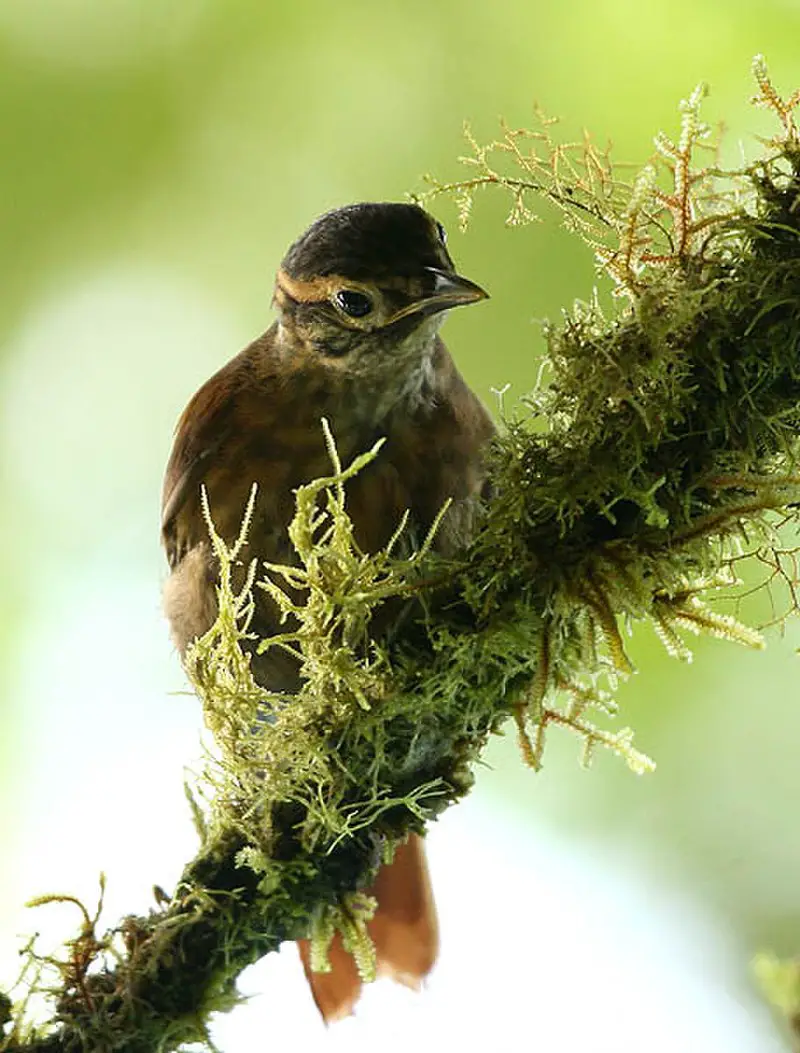
Ovenbirds are a family of small passerine birds found in Central and South America. They have around 315 species, divided into 70 genera. The most popular ovenbird is the Seiurus aurocapilla, which breeds in North America.
These birds typically inhabit wooded areas like forests or shrubland habitats, where they can forage for food such as insects and berries on the ground or low-lying vegetation.
Ovenbirds also build unique nests that resemble an oven with a side entrance—hence their name.
With its bright colours, melodic call and interesting nesting habits it’s no wonder why this bird has become so popular with birdwatchers worldwide.Scientific classification:
| Kingdom | Animalia |
| Phylum | Chordata |
| Class | Aves |
| Order | Passeriformes |
| Infraorder | Tyrannides |
| Family | Furnariidae Gray, 1840 |
35. Ecuadorian Ground Dove
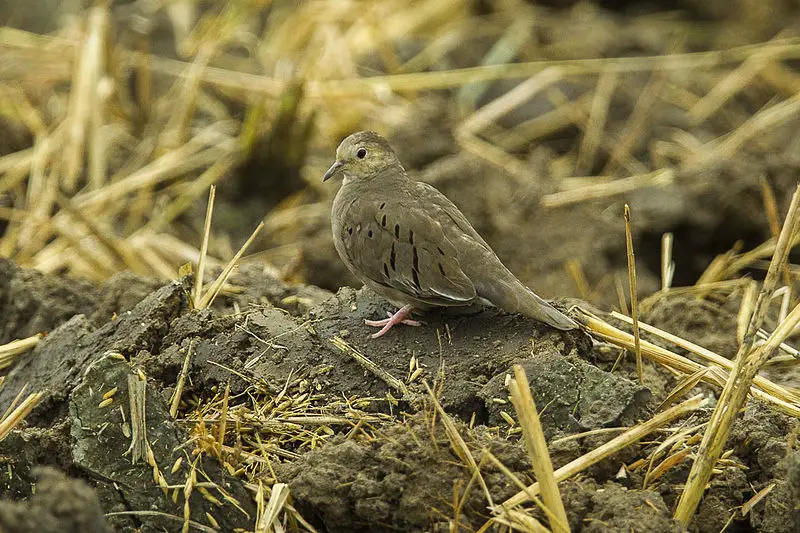
The Ecuadorian ground dove (Columbina buckleyi) is a species of bird that belongs to the Columbidae family. It inhabits parts of Peru and Ecuador, and can often be found in open areas such as scrubland or savannahs.
This small-sized dove has blueish grey feathers on its back while its front side is typically reddish brown. The underpart may also have some spots which are either white or pink in coloration. Its diet consists mainly of seeds but it will occasionally feed on insects too.
With beautiful plumage and an active lifestyle, this lovely bird makes for great viewing when out exploring natural habitats in these countries.Scientific classification:
| Kingdom | Animalia |
| Phylum | Chordata |
| Class | Aves |
| Order | Columbiformes |
| Family | Columbidae |
| Genus | Columbina |
| Species | C. buckleyi |
36. Masked Trogon
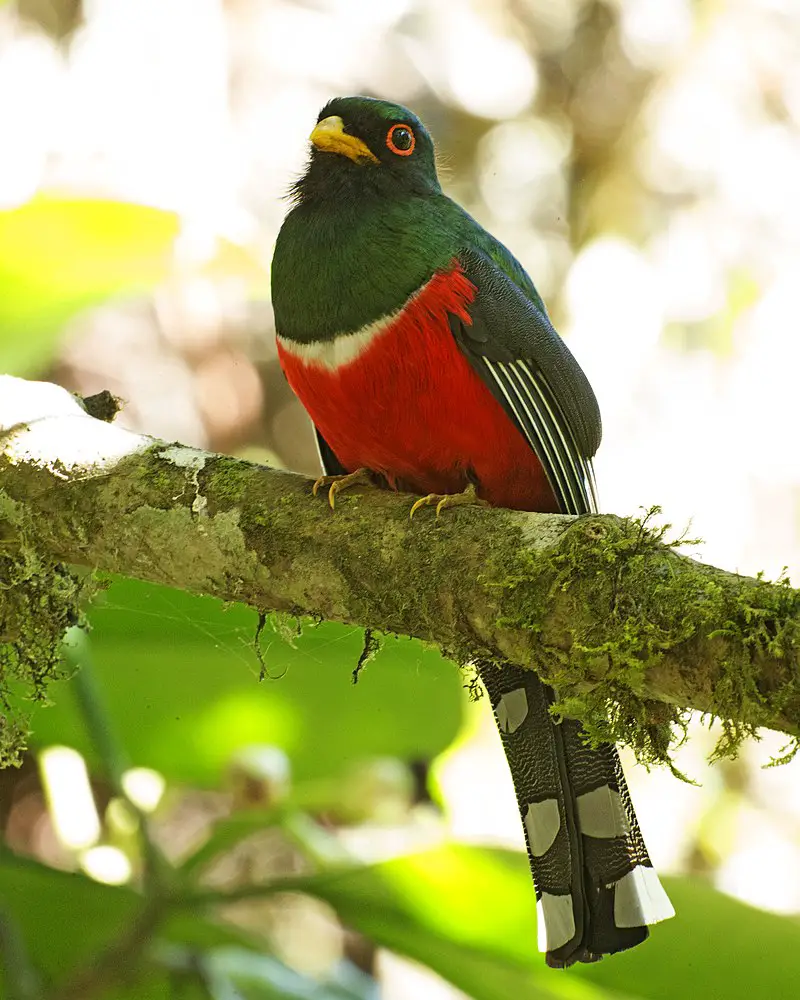
The Masked Trogon (Trogon personatus) is a species of bird belonging to the family Trogonidae. It’s quite common in humid highland forests across South America, particularly in Andes and tepuis mountain ranges.
There are 8 recognized subspecies of this magnificent creature which has an average length of 27 cm and masss 56 grams with distinct sexual dimorphism.
This beautiful bird typically displays shades of green, blue-grey with its vivid yellow breast that serves as their distinguishing feature among other birds.
Their diet consists mainly on various insects but they also feed upon small vertebrates such as geckos or lizards if available. The masked trogons frequent solitary life while at times can be seen perching on tree tops alone – making them easy to spot by nature enthusiasts.Scientific classification:
| Kingdom | Animalia |
| Phylum | Chordata |
| Class | Aves |
| Order | Trogoniformes |
| Family | Trogonidae |
| Genus | Trogon |
| Species | T. personatus |
37. Long-Tailed Sylph
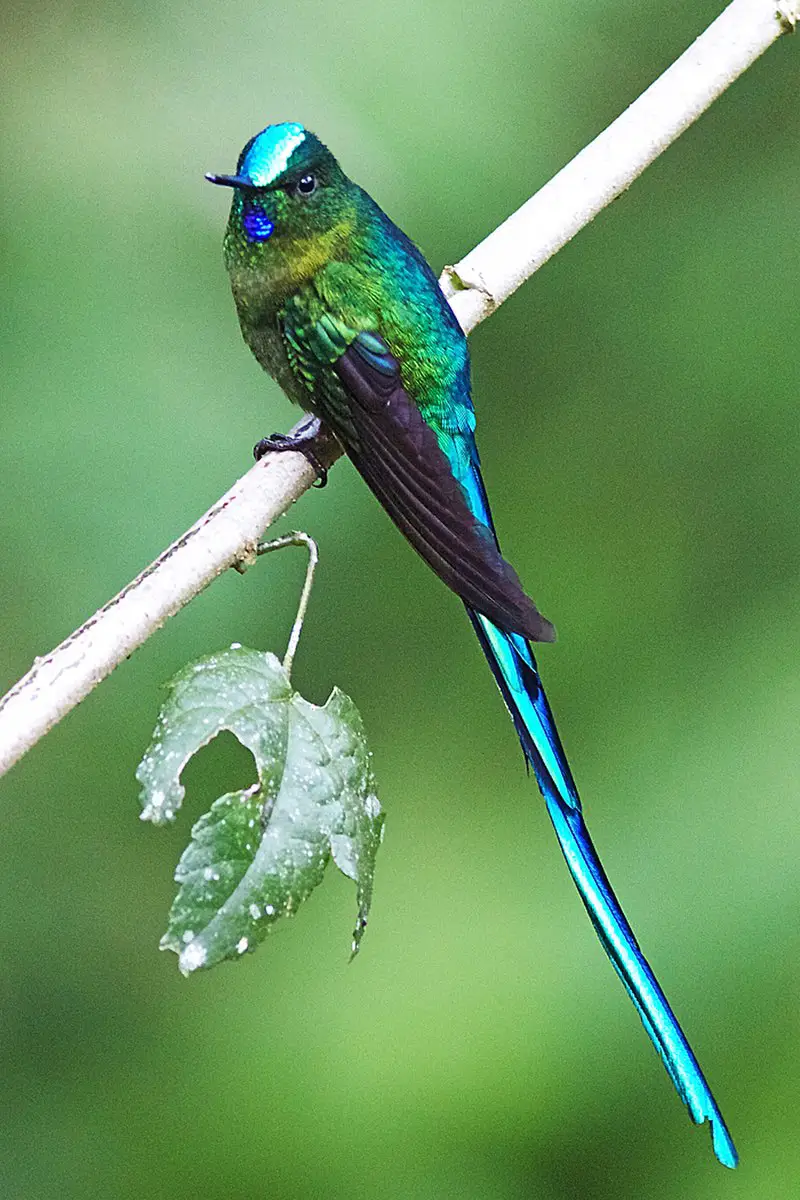
The Long-tailed Sylph is a species of hummingbird found in Bolivia, Colombia, Ecuador, Peru and Venezuela. It belongs to the “coquettes” tribe Lesbiini from subfamily Lesbiinae.
This rare bird has an intricate taxonomy as it also includes two other sylphs – Violet-tailed (Aglaiocercus coelestis) and Venezuelan (Aglaiocercus berlepschi).
The beauty of this small creature lies in its long tail which can reach up to 10 inches or more.
It feeds on nectar using its slender bill with brushy feathers at the tip for collecting pollen while hovering over flowers.
Its vibrant colors make them easy to spot amongst trees or near streams where they prefer nesting. All these features have made this little bird one of nature’s most treasured wonders.Scientific classification:
| Kingdom | Animalia |
| Phylum | Chordata |
| Class | Aves |
| Order | Apodiformes |
| Family | Trochilidae |
| Genus | Aglaiocercus |
| Species | A. kingii |
38. Tapaculo
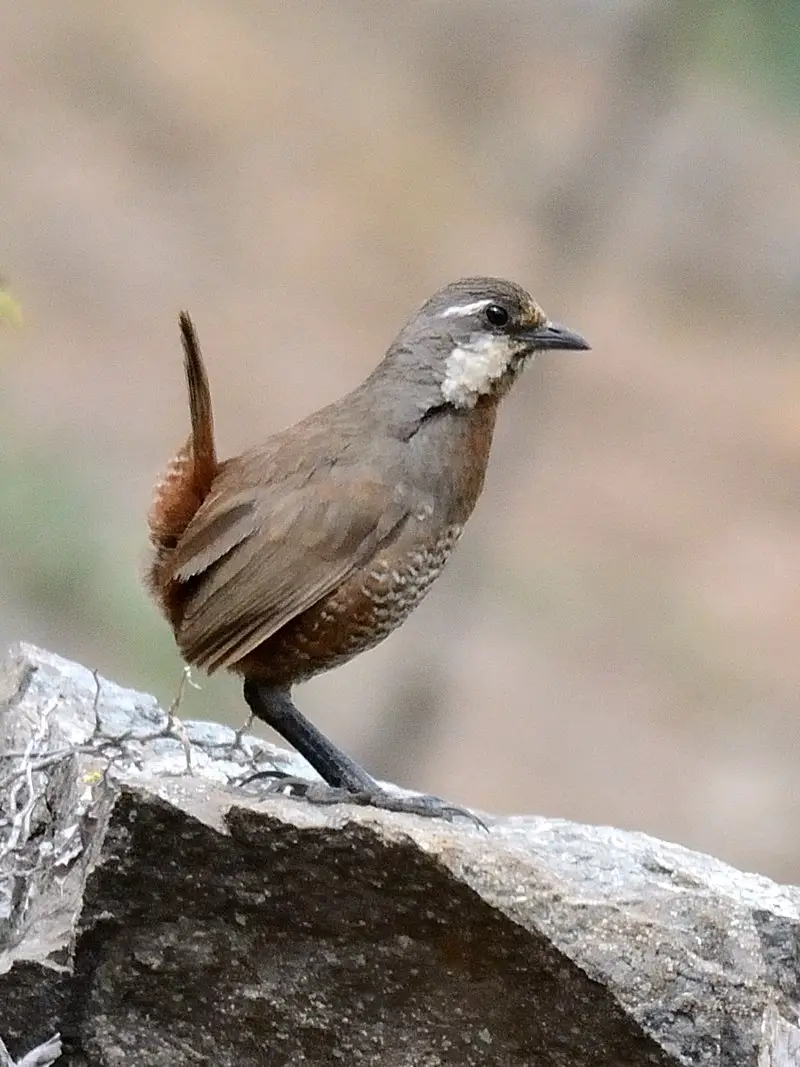
Tapaculos are a family of small to medium-sized, suboscine passerine birds found mainly in South America and parts of Central America. They range from 10-24 centimeters in length and have the highest diversity located within the Andean regions.
These birds typically have dark feathers on their head, back or wings with lighter colored bellies. Their habitat consists mostly of dense undergrowth near water sources such as streams or rivers where they can search for food amongst vegetation like insects and small rodents which make up most of their diet.
Tapaculos also build nests out of grasses, mosses, leaves and other natural materials to ensure protection from predators while breeding season is underway. With distinct calls that vary depending on species location; these unique creatures are not only an interesting sight but provide us with some beautiful sounds too.Scientific classification:
| Kingdom | Animalia |
| Phylum | Chordata |
| Class | Aves |
| Order | Passeriformes |
| Superfamily | Formicaroidea |
| Family | Rhinocryptidae Wetmore, 1930 |
39. Pheasant Cuckoo
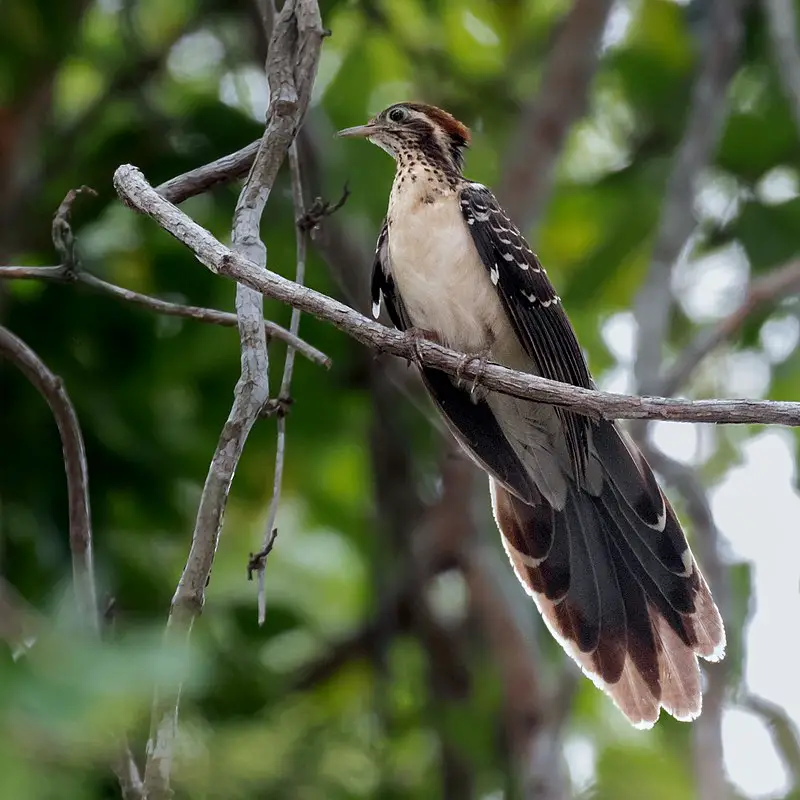
The beautiful Pheasant Cuckoo is native to Central and South America, where it can be found in lowland tropical forests. It has a short crest which is tipped with rusty brown, whilst its upper parts are dark sooty-brown and the underparts pale buff with small black spots.
This bird makes a variety of calls including loud whistles during nesting season as well as harsh croaks when disturbed or alarmed.
The diet of this species consists mainly of large insects such as beetles and grasshoppers along with some fruits from time to time. Furthermore, they also hunt smaller birds by chasing them down until captured.
These cuckoos rely heavily on trees for both shelter and food sources; therefore deforestation poses a great threat for their survival.
Despite these threats however, the population still remains quite stable due to their wide range across different countries in Central American region making them Least Concerned according to IUCN Red List StatusScientific classification:
| Kingdom | Animalia |
| Phylum | Chordata |
| Class | Aves |
| Order | Cuculiformes |
| Family | Cuculidae |
| Genus | Dromococcyx |
| Species | D. phasianellus |
40. Guayaquil Woodpecker
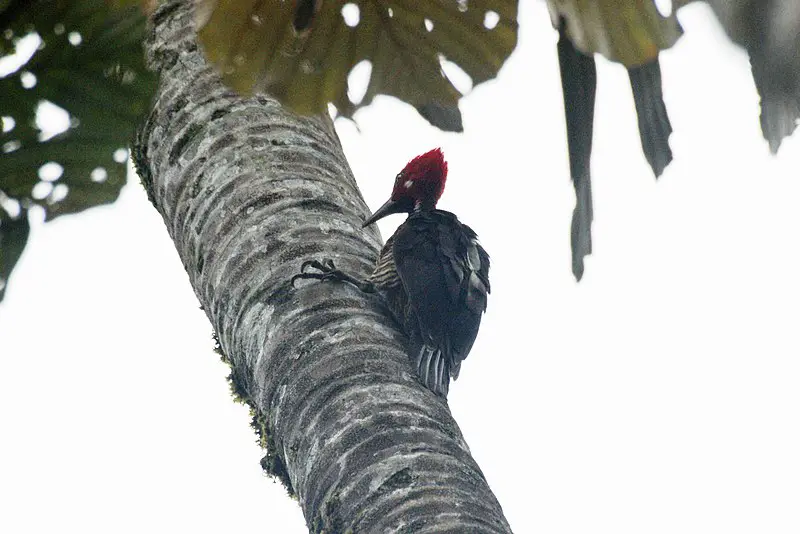
The Guayaquil woodpecker is a beautiful species of bird that can be found in southern Colombia, Ecuador and northern Peru. It inhabits subtropical or tropical dry forests as well as subtropical or tropical moist lowland forests.
This majestic creature has black feathers with white speckles on its wings, and red feathers around the top of its head which give it an eye-catching appearance.
Unfortunately, this stunning species is threatened by habitat loss due to deforestation activities for timber production and other human activities such as urbanization and agricultural expansion.
Conservation efforts are needed to ensure these birds remain part of our natural world for future generations.Scientific classification:
| Kingdom | Animalia |
| Phylum | Chordata |
| Class | Aves |
| Order | Piciformes |
| Family | Picidae |
| Genus | Campephilus |
| Species | C. gayaquilensis |
41. Crimson-Bellied Woodpecker
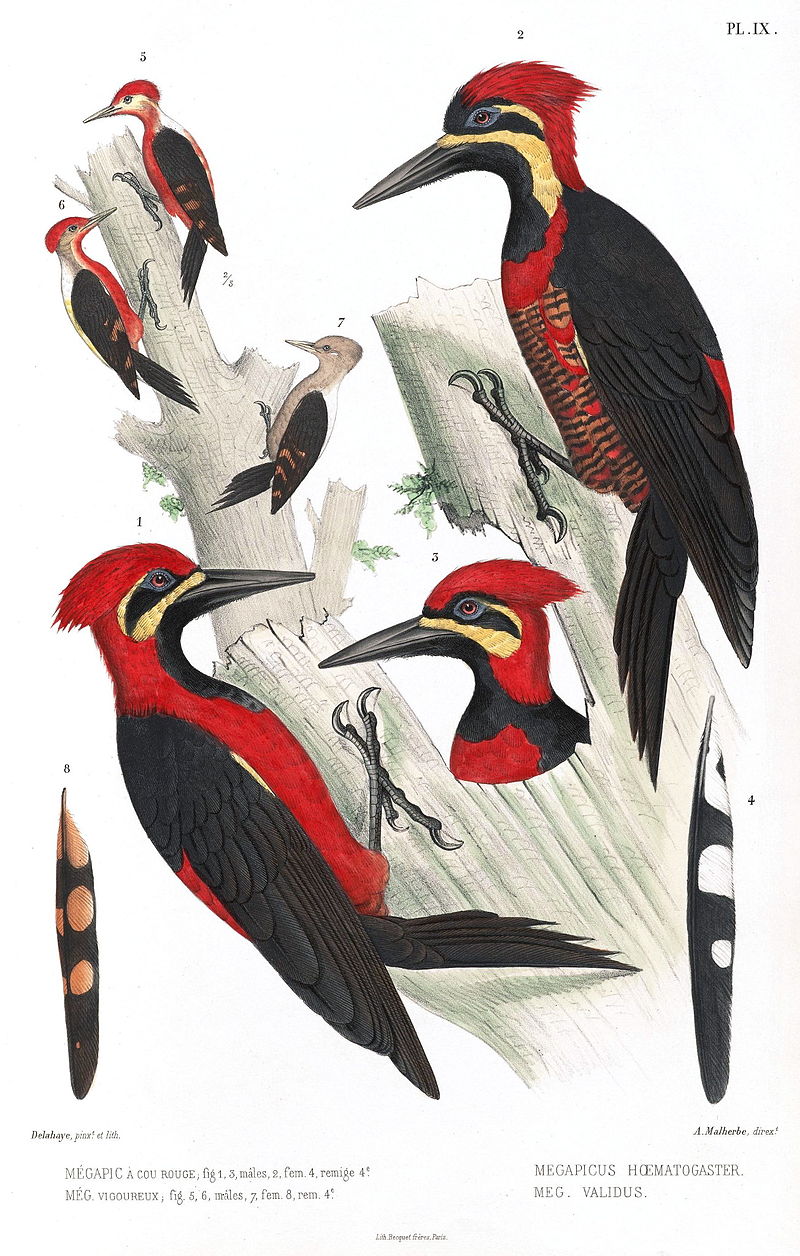
The Crimson-bellied Woodpecker is a species of bird in the Picidae family, found in Colombia, Ecuador, Panama and Peru. It inhabits moist lowland and montane forests.
There are two subspecies recognised; C. h. splendens is treated as a separate species by some authorities due to its striking plumage and distinct vocalisations compared to other woodpeckers from the area.
This distinctive red-coloured bird makes loud tapping noises with its beak on dead branches or tree trunks when searching for food – this behaviour helps them find insect larvae within trees that they can feast upon.
Their diet also consists of fruits which they hang upside down while eating it off the branch or vine. The bright colours make them easily recognisable amongst their surroundings making them prime targets for predators like snakes, cats and larger birds such as hawks & eagles who hunt these delightful creatures for sustenance.Scientific classification:
| Kingdom | Animalia |
| Phylum | Chordata |
| Class | Aves |
| Order | Piciformes |
| Family | Picidae |
| Genus | Campephilus |
| Species | C. haematogaster |
42. White-Cheeked Pintail
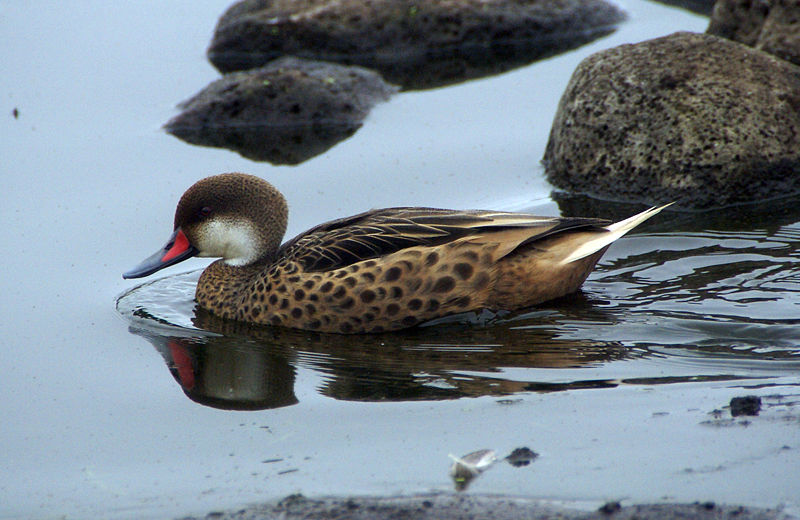
The white-cheeked pintail is a species of dabbling duck first described by Carl Linnaeus in 1758. This beautiful bird can be found mainly in the Caribbean, South America, and Galápagos Islands.
It prefers to inhabit brackish lakes or other waters with some salinity where it swims gracefully amongst its environment.
White-cheeked pintails have striking brown plumage on their back which contrasts beautifully against their white cheeks and bellies.
They also possess an elongated tail that aids them during flight as well as helping them attract potential mates while they are courting.
These birds feed primarily on aquatic invertebrates but may also consume small fish or plant material if available.
The conservation status of the white-cheeked pintail is currently considered “Least Concern” due to its wide distribution range and stable population numbers across much of its native habitat range.Scientific classification:
| Kingdom | Animalia |
| Phylum | Chordata |
| Class | Aves |
| Order | Anseriformes |
| Family | Anatidae |
| Genus | Anas |
| Species | A. bahamensis |
Also Featured In: Birds that You’ll Find in Puerto Rico, Birds That Live around Grand Turk Island
43. Great Thrush
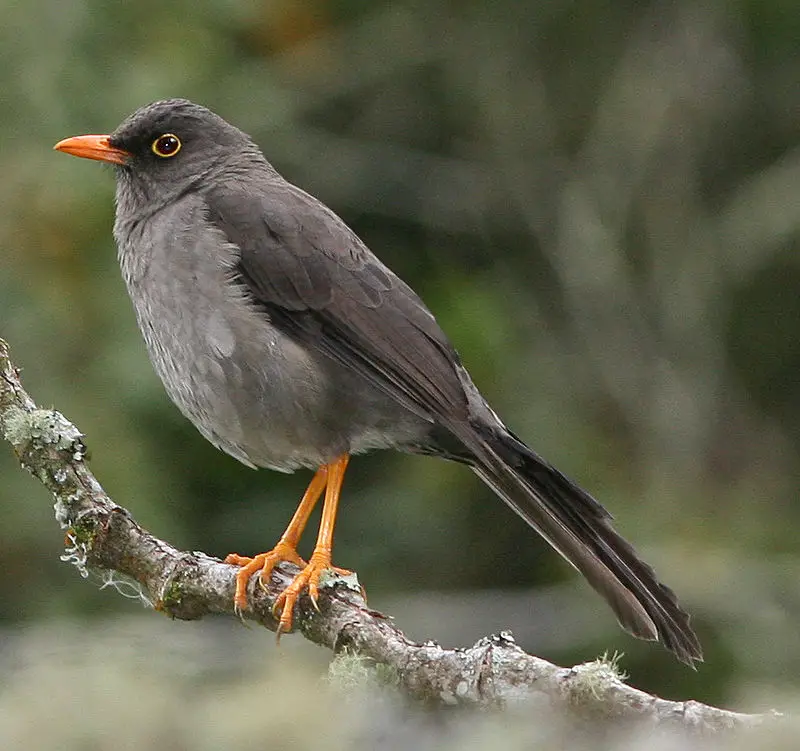
The Great Thrush is a species of bird that can be found in the mountainous regions of South American countries such as Bolivia, Colombia, Ecuador, Peru and Venezuela.
It stands out among other thrushes due to its large size and unique slate-grey coloration.
This remarkable bird resides primarily in moist subtropical or tropical montane forests at high altitudes where it feeds on fruits from shrubs and trees or searches for small insects on the ground.
The great thrush’s call has been described as having an eerie quality – somewhat musical but with some harsh notes mixed into it. Its impressive size makes this species a sight worth beholding.Scientific classification:
| Kingdom | Animalia |
| Phylum | Chordata |
| Class | Aves |
| Order | Passeriformes |
| Family | Turdidae |
| Genus | Turdus |
| Species | T. fuscater |
Also Featured In: Most Common Birds in South America Birds,
44. Eared Dove
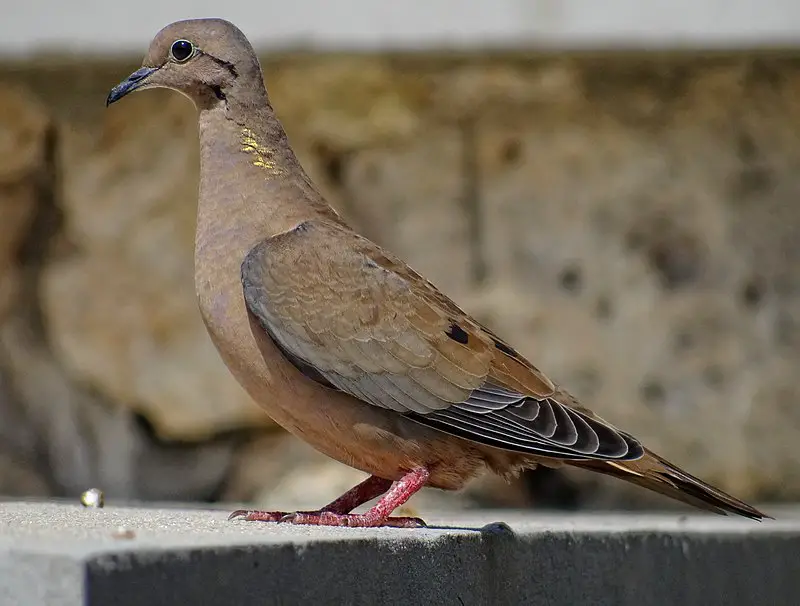
The Eared Dove is a beautiful bird that can be found throughout South America, ranging from Colombia to Argentina and Chile. It has also been spotted in Trinidad and Tobago recently.
This species tends to be partially migratory depending on food supplies available in the area, making it an important part of the local environment.
Its plumage tends to vary by region with some individuals having brighter colors than others where they are found near forested areas or along coasts.
The most recognizable feature of this dove is its ear tufts which gives it its common name – Eared Dove.
These doves have a soft cooing sound as their call which makes them truly unique among other birds in their range.Scientific classification:
| Kingdom | Animalia |
| Phylum | Chordata |
| Class | Aves |
| Order | Columbiformes |
| Family | Columbidae |
| Genus | Zenaida |
| Species | Z. auriculata |
45. Saffron Finch
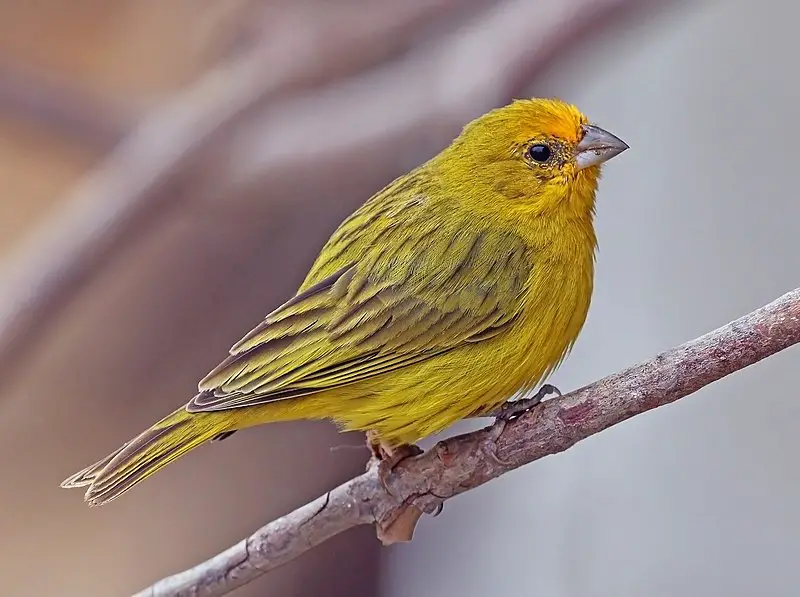
The Saffron Finch is a small tanager bird found in South America. This delightful species has an extensive distribution, ranging from Colombia to eastern Brazil and Bolivia.
They inhabit open or semi-open habitats at low elevations outside the Amazon Basin.
With their easily recognizable bright yellow feathers and cheerful song, they are often seen perching on roofs in northern Venezuela where they are referred to as “canario de tejado”.
In southern Brazil these birds are known as “canário-da-terra”, which translates into native canary.
Their diet consists mainly of seeds, grains and insects such as grasshoppers, caterpillars and beetles.
Although not threatened with extinction yet, deforestation may soon reduce their available habitat significantly if measures aren’t taken to conserve it now.Scientific classification:
| Kingdom | Animalia |
| Phylum | Chordata |
| Class | Aves |
| Order | Passeriformes |
| Family | Thraupidae |
| Genus | Sicalis |
| Species | S. flaveola |
46. Long-Wattled Umbrellabird
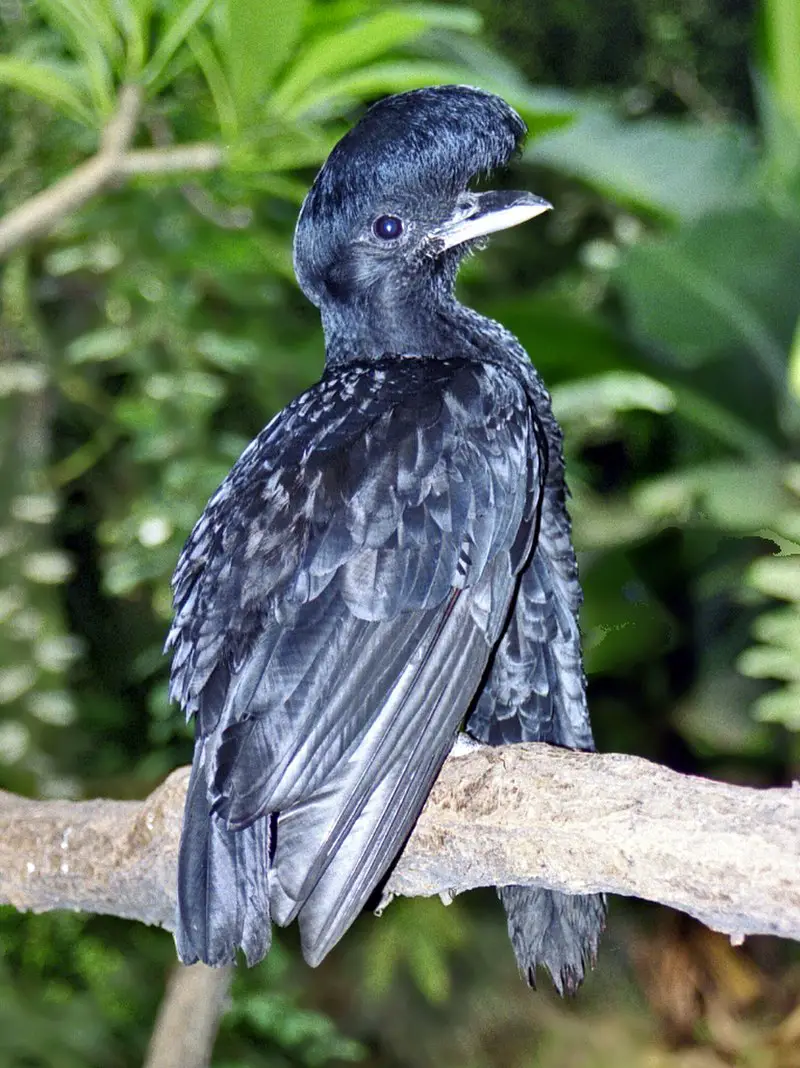
The Long-wattled Umbrellabird is a rare species of bird in the Cotingidae family, found on the Pacific slopes of Colombia and Ecuador. It prefers wet premontane and cloud forests, hence its name.
Its Spanish names include pájaro bolsón, pájaro toro, dungali, and vaca del monte – all referencing its distinctive appearance with long wattles that hang from either side of their face.
These birds are mostly black or greyish brown in colour with a yellow crown patch giving them an almost umbrellalike look when seen from above.
They have become increasingly threatened due to deforestation leading to habitat loss but thankfully there has been some work done by local conservationists to protect these remarkable creatures for future generations.Scientific classification:
| Kingdom | Animalia |
| Phylum | Chordata |
| Class | Aves |
| Order | Passeriformes |
| Family | Cotingidae |
| Genus | Cephalopterus |
| Species | C. penduliger |
47. Red-Lored Amazon
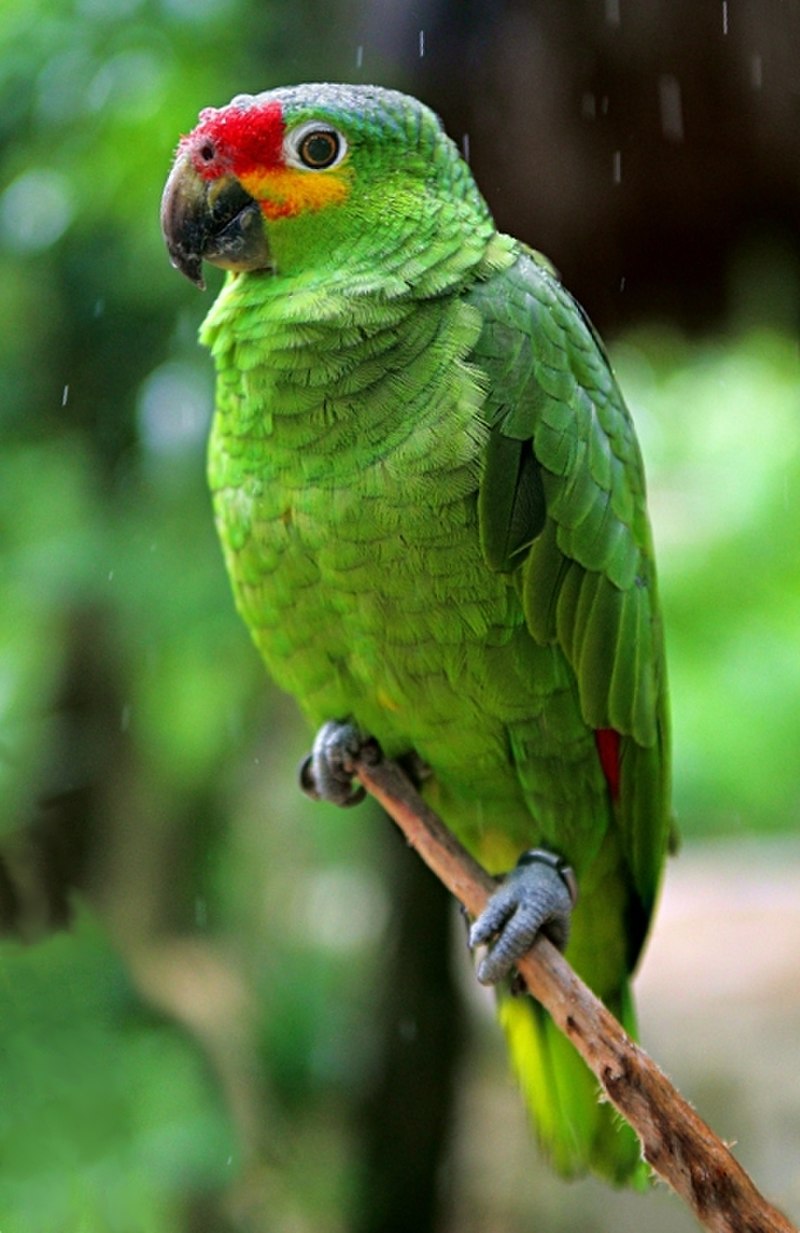
The Red-lored Amazon is a brightly coloured parrot native to tropical regions of the Americas, from eastern Mexico south to Ecuador. It inhabits humid evergreen and semi-deciduous forests up to 1,100 metres above sea level.
This species was not originally known in El Salvador but there have been reports of escaped birds seen in this region recently.
The Red-lored Amazon has an overall green plumage with red on its forehead that extends down onto its cheeks and throat while its belly is yellowish or orangey in colouration.
They are also well known for their intelligence and ability to mimic human speech which make them popular as pets.
However, they are listed under CITES Appendix II due largely because deforestation continues at an alarming rate throughout much of their range within Central America causing population declines across many areas where these birds occur naturallyScientific classification:
| Kingdom | Animalia |
| Phylum | Chordata |
| Class | Aves |
| Order | Psittaciformes |
| Family | Psittacidae |
| Genus | Amazona |
| Species | A. autumnalis |
Also Featured In: Birds You’ll Find in the Rio Grande Valley, Red Birds You’ll Commonly Found in Texas
48. Esmeraldas Woodstar
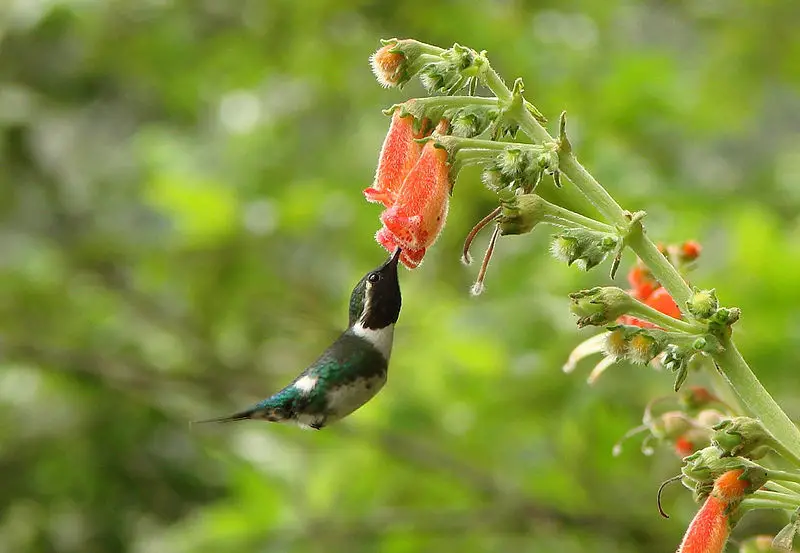
The Esmeraldas woodstar is a rare and beautiful hummingbird found in the neotropical region. It belongs to the genus Chaetocercus, of which there are six species in total.
These birds are quite small—one of the smallest bird species out there.
They also show sexual dimorphism; males have a bright green head with an orange throat patch while females have plainer grey-green heads and white throats.
Unfortunately, due to their size, rarity and similarity between each other, they remain poorly studied by scientists today.
Fortunately though these exquisite little creatures can still be seen flitting about from flower to flower as if dancing through life with every beat of their wings.Scientific classification:
| Kingdom | Animalia |
| Phylum | Chordata |
| Class | Aves |
| Order | Apodiformes |
| Family | Trochilidae |
| Genus | Chaetocercus |
| Species | C. berlepschi |
49. Smooth-Billed Ani
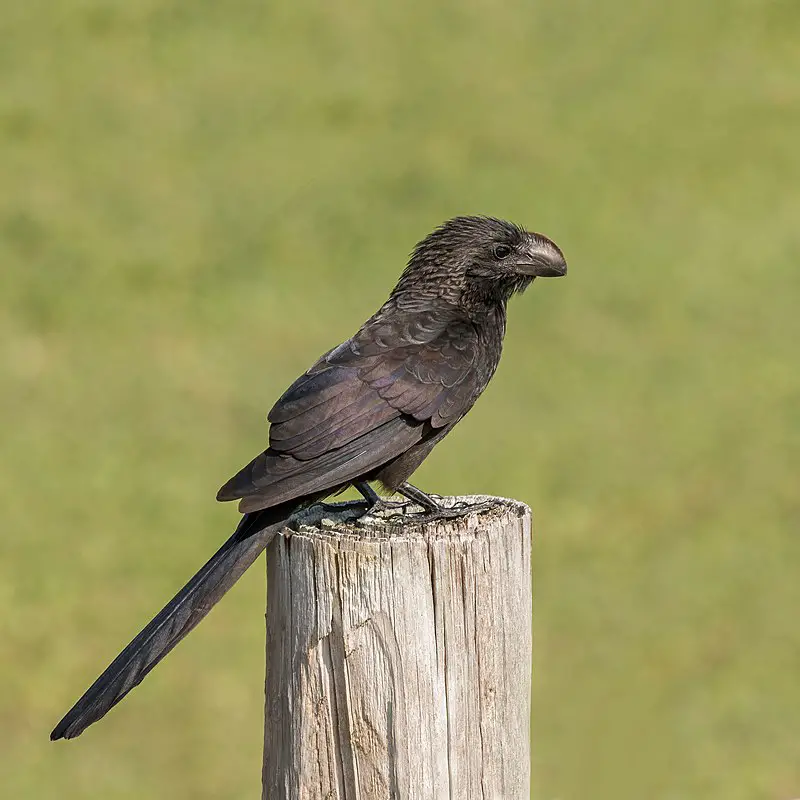
The Smooth-billed Ani is a species of bird in the cuckoo family, native to regions spanning from southern Florida and the Caribbean down through Central America, South America, and parts of Argentina.
They have even been introduced to Galapagos around 1960s where they may be impacting local wildlife due to their aggressive nature.
As its name suggests, these birds have smooth bills which are adapted for feeding on hard fruits or other items such as insects and lizards that it finds while scavenging around trees or ground level vegetation.
They usually form small flocks when out searching for food with males being slightly larger than females.
Overall this adaptable species is found in many habitats across its broad range but does best at low elevation open areas near water sources like marshes or swamps making them easier targets for human disturbance as well.Scientific classification:
| Kingdom | Animalia |
| Phylum | Chordata |
| Class | Aves |
| Order | Cuculiformes |
| Family | Cuculidae |
| Genus | Crotophaga |
| Species | C. ani |